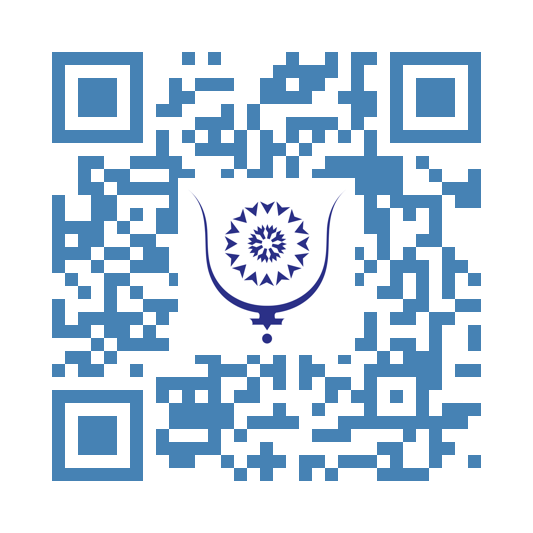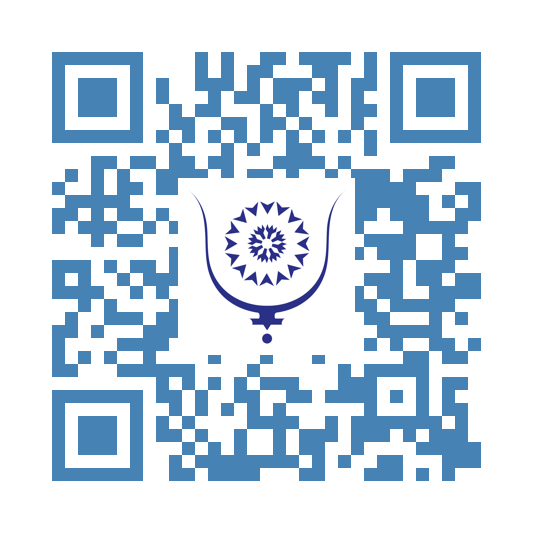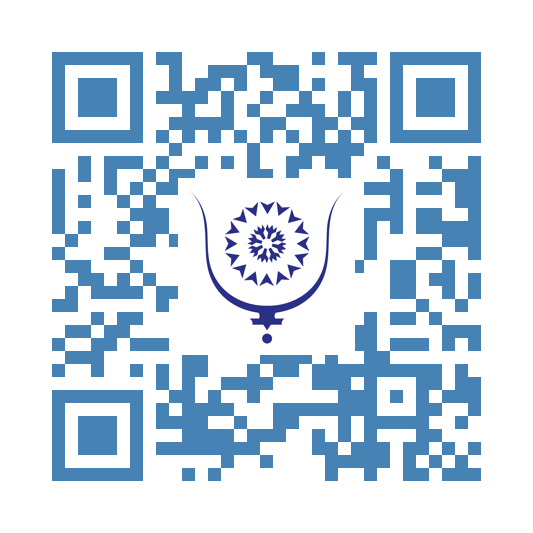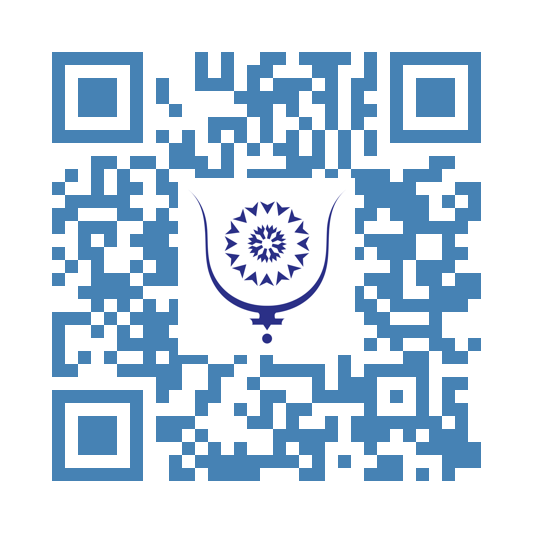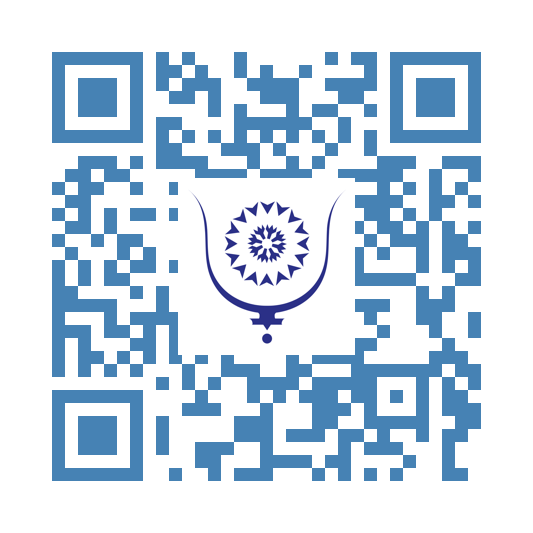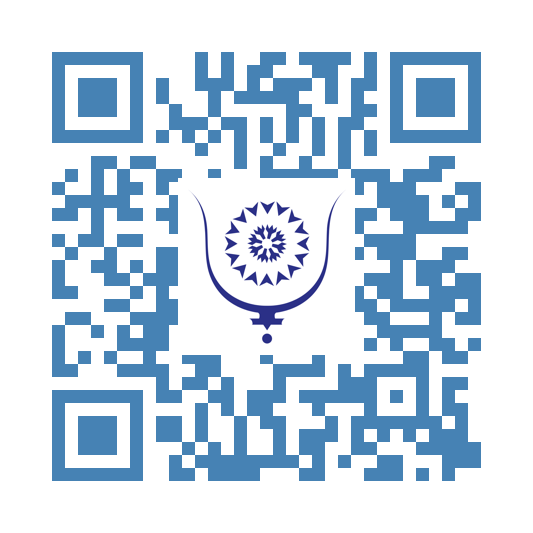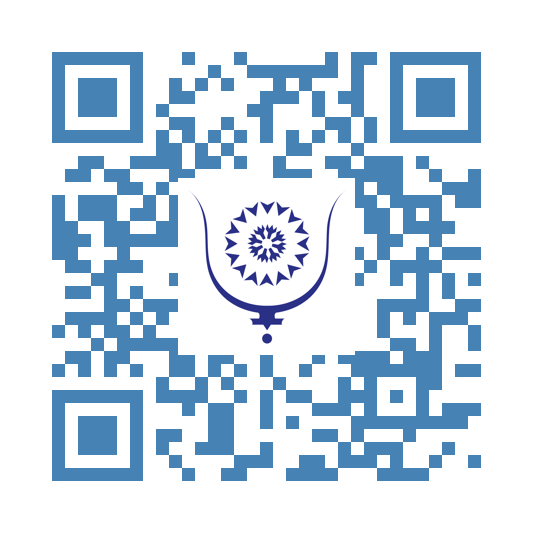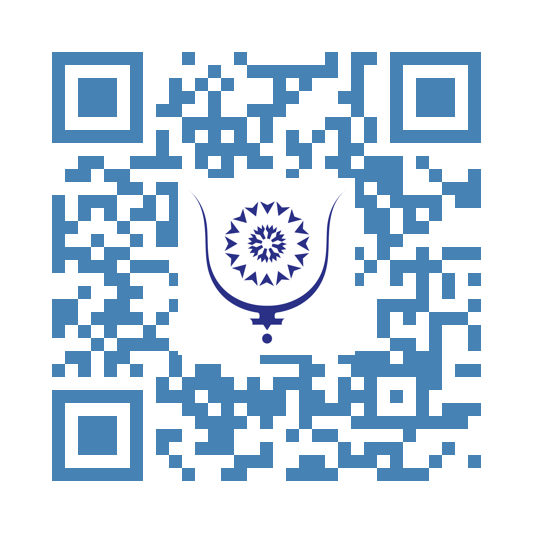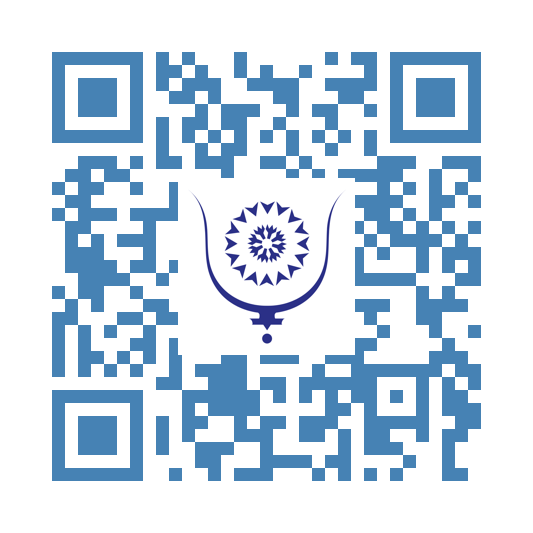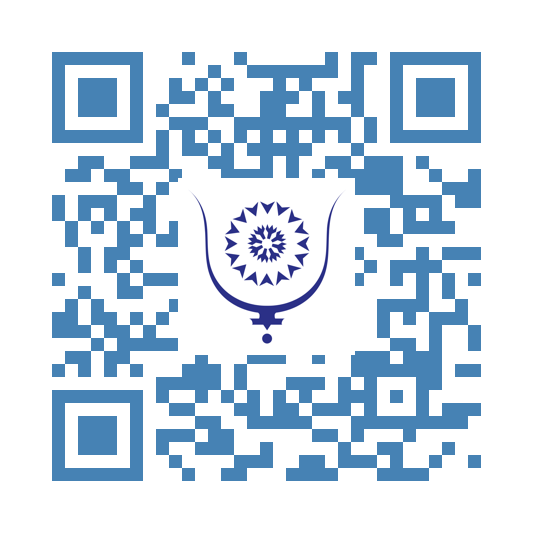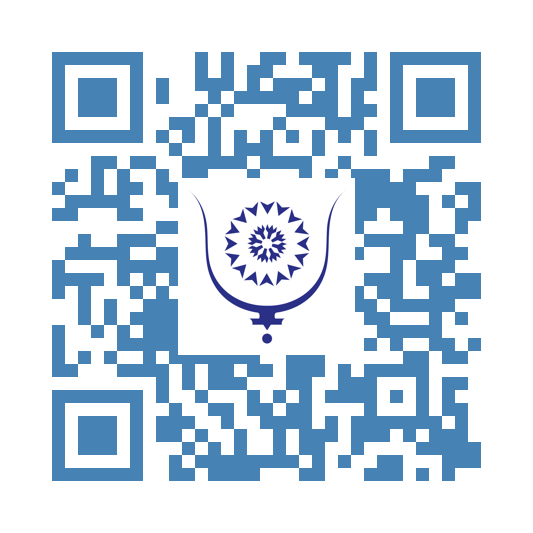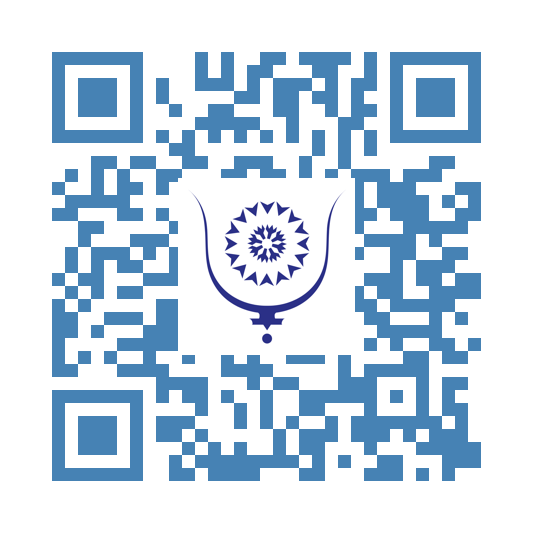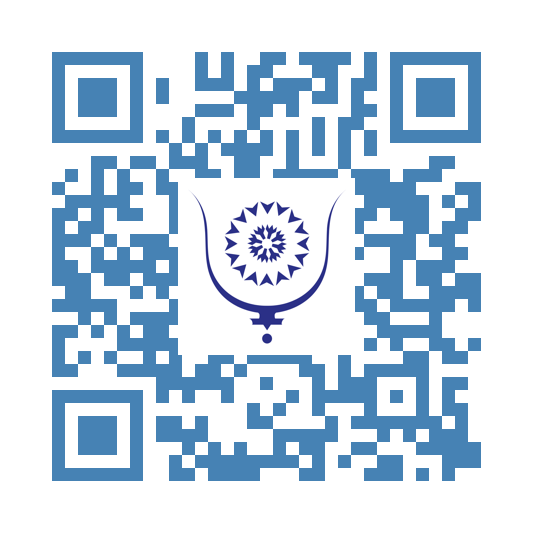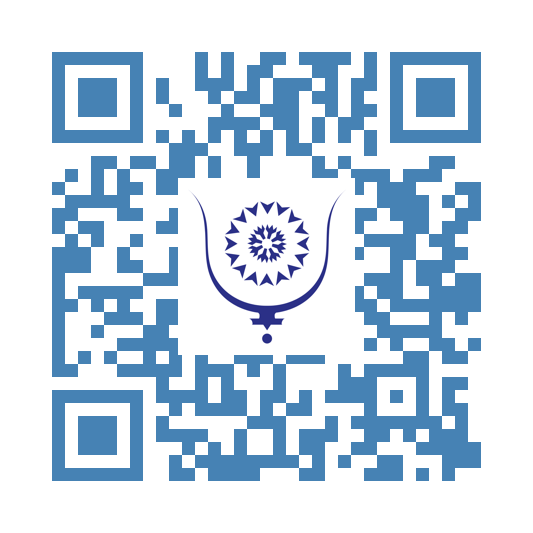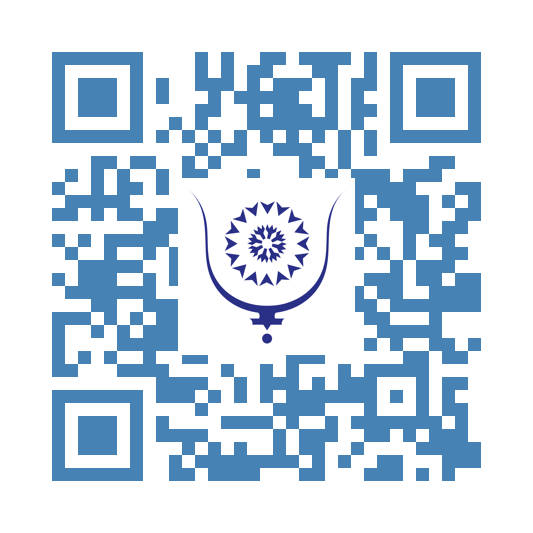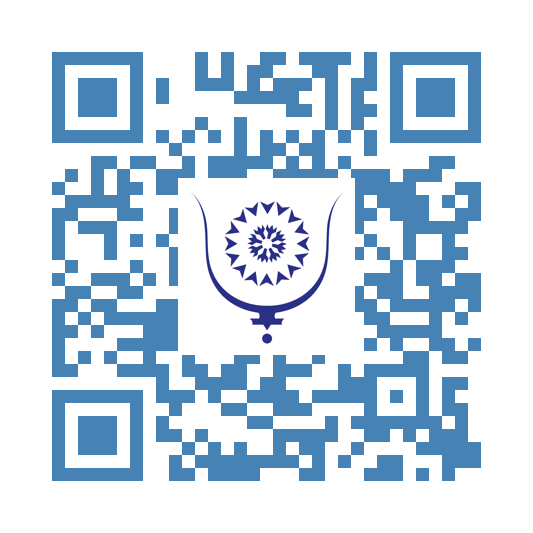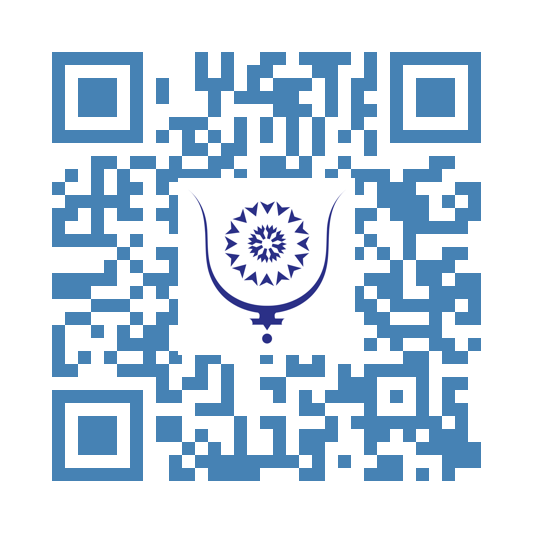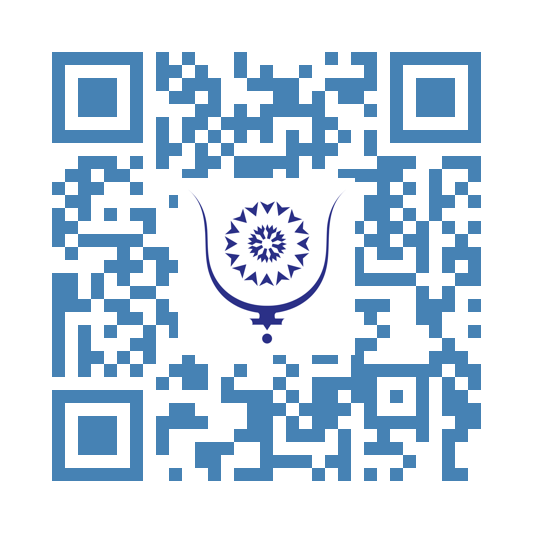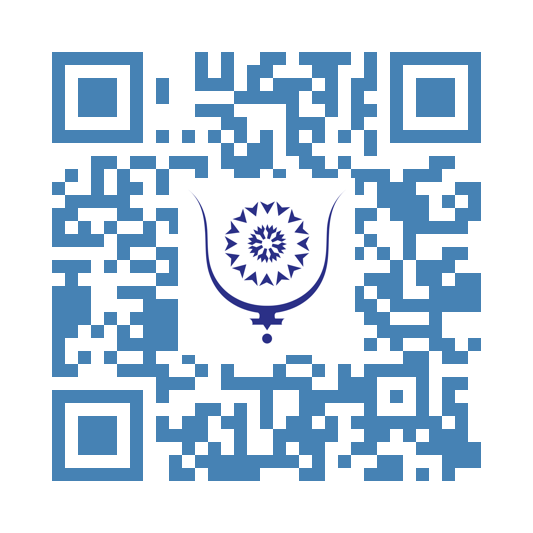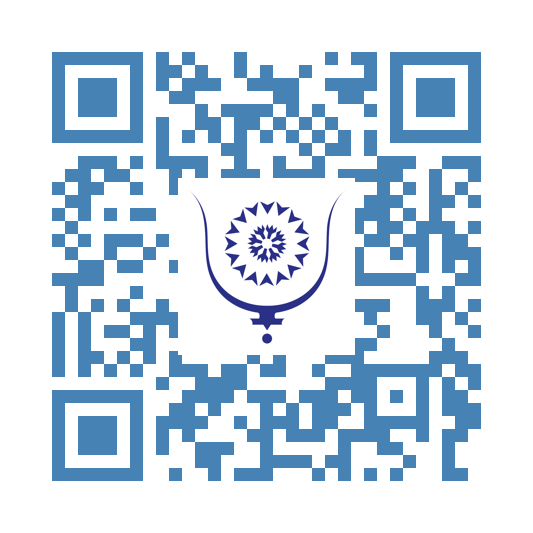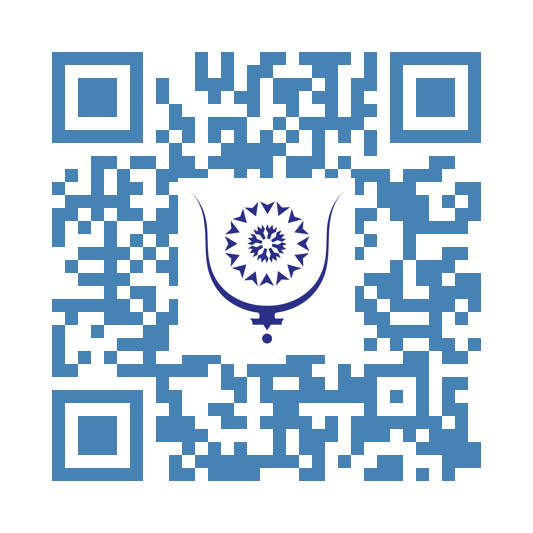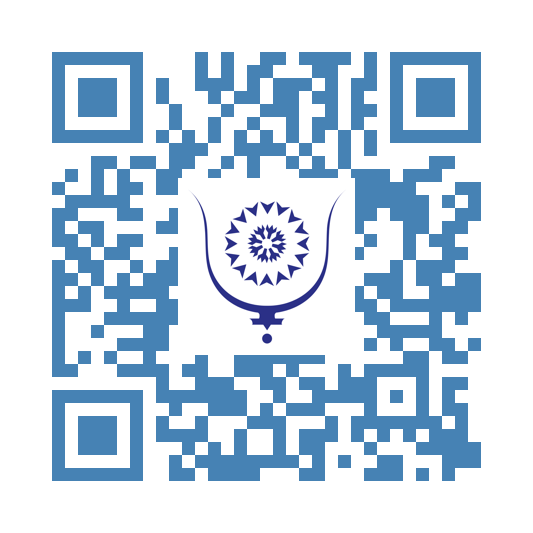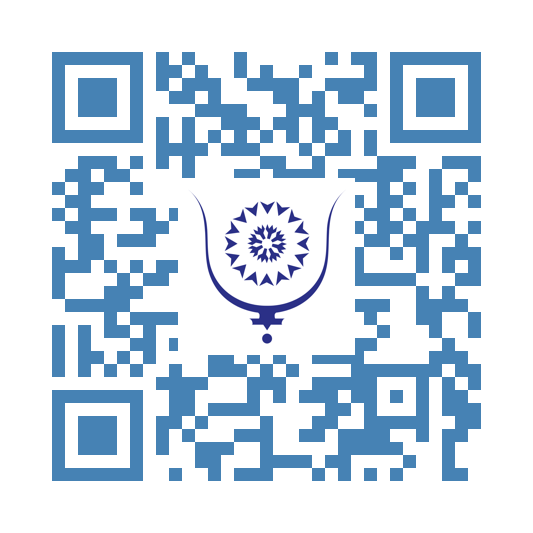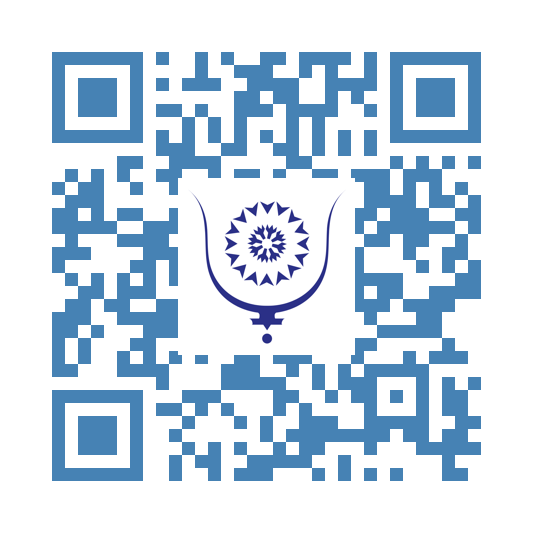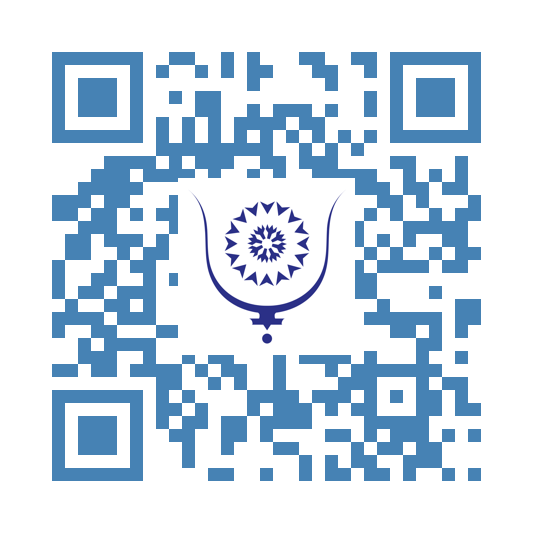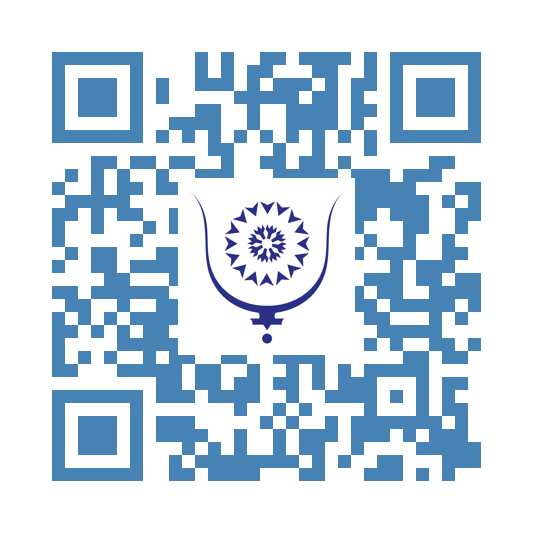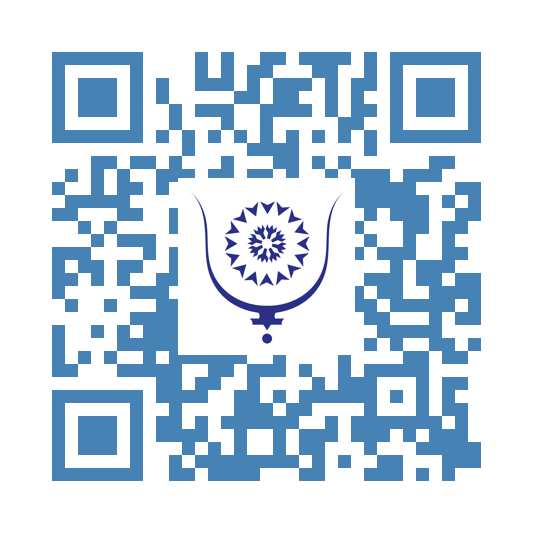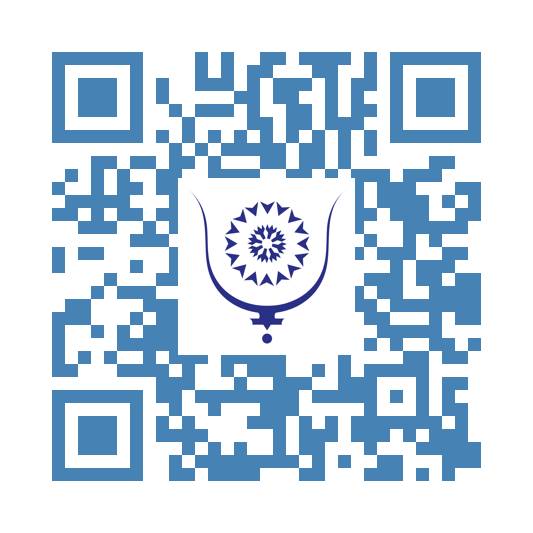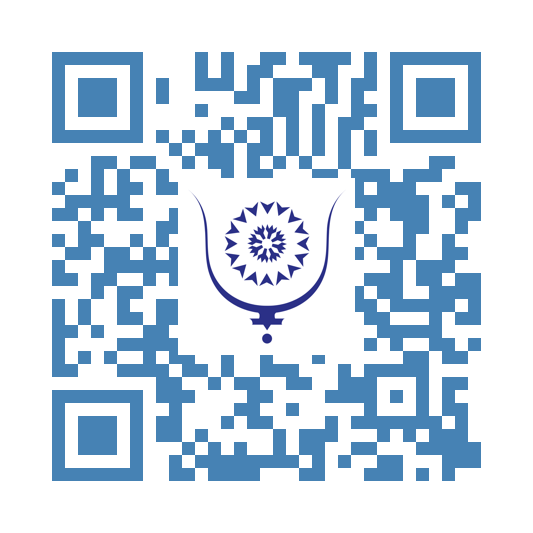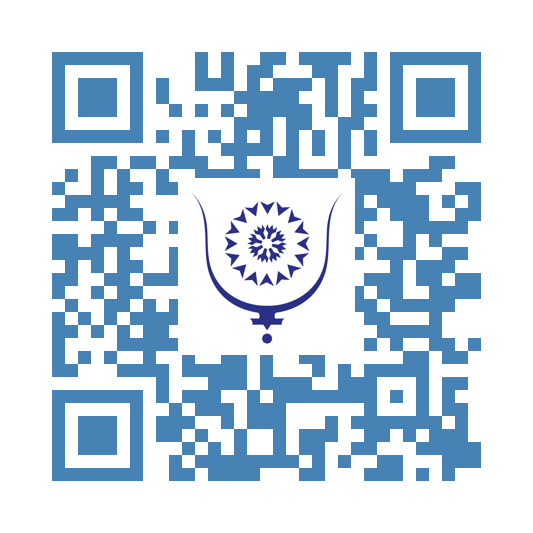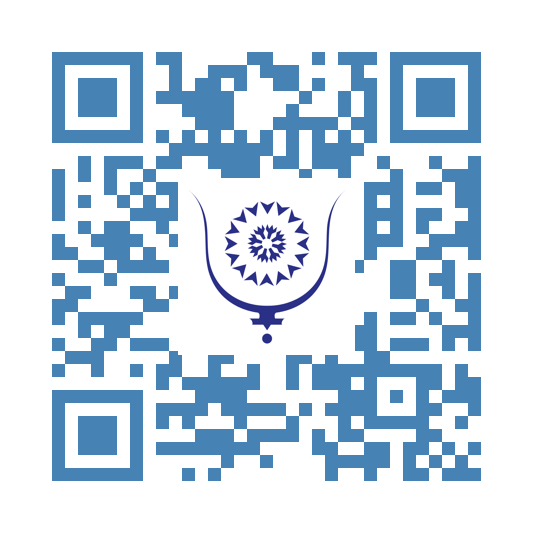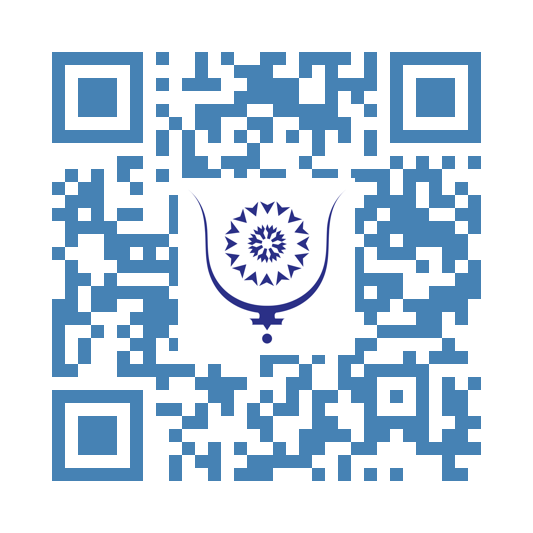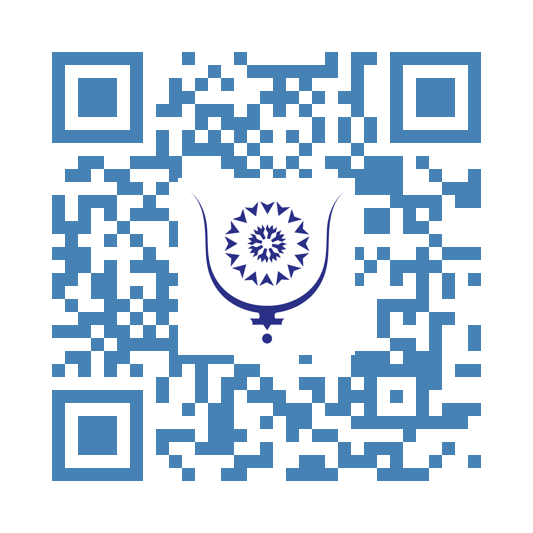AI+Health: An Undelivered Promise
AI is everywhere, or so would it seems, but the promises made for Drug Discovery and Medicine are still yet to be fulfilled. AI seems to always spring from a Promethean impulse. The goal of creating a life beyond life, doing the work of gods by creating a new life form as Prometheus created humanity. From Techne to independent life, a life that looks life us. Something most people refer to as AGI today.
This is the biggest blind spot of AI development. The big successes of AI are in a certain way always in the same domains:
- Image Processing
- Natural Language Processing
The reason is simple, we are above all visual, talking animals. Our Umwelt, the world we inhabit is mostly a world of images and language, every human is an expert in these two fields. Interestingly, most humans are not as sound aware as they are visually aware. Very few people can separate the different tracks in a music piece, let alone identify certain frequencies or hear delicate compressions and distortions. We are not so good with sound, and it shows in the relatively less ground breaking AI tools available for sound processing.
The same phenomenon explains why AI struggles to achieve in very complex domains such as Biology and Chemistry.
At it's core, modern AI is nothing more than a powerful general way to automatically guess relevant mathematical functions describing a phenomenon from collected data. What statisticians call a *Model*. From this great power derives the domain chief illusion: because the tool is general, therefore the wielder of that tool can apply it to any domain. Experience shows that this thinking is flawed.
Every AI model is framed between two thing: its dataset (input) and its desired output as represented by the loss function. What is important, what is good, what is bad, how should the dataset be curated, how should the model be adjusted. For all these questions and more, you need a deep knowledge of the domain, of the assumptions of the domain, of the technicalities of the domain, of the limitations that are inherent to data collection in that domain. Domain knowledge is paramount, because AI algorithms are always guided by the researchers and engineers. This I know from experience, having spent about 17 years closely working with biologists.
Pairing AI specialists with domain specialist with little knowledge of AI also rarely delivers. A strategy that has been tested time and time again in the last 10 years. Communication is hard and slow, most is lost in translation. The best solution is to have AI experts that are also experts in the applied domain, or domain experts that are also AI experts. Therefore the current discrepancies we see in AI performances across domains, could be layed at the feet of universities, and there siloed structures.
Universities are organized in independent departments that teach independently. AI is taught at the Computer Science department, biology at the Biochemistry department. These two rarely meet in any substantial manner. It was true went I was a student, it is still true today.
This is one of the things we are changing at the Faculty of Medical Science of the University Mohammed VI Polytechnic. Students in Medicine and Pharmacy have to go through a serious AI and Data science class over a few years. They learn to code, they learn the mathematical concepts of AI, they learn to gather their own datasets, to derive their hypothesizes, and build, train and evaluate their own models using pyTorch.
The goal being to produce a new generation of scientists that are intimate with their domain as well as with modern AI. One that can consistently deliver the promises of AI for Medicine and Drug Discovery.
Share:
AI+Health: An Undelivered Promise
copy:
https://bluwr.com/p/9804934
What Happens If You Swallow Snake Venom?
Imagine you're hanging out with friends, and someone randomly asks, "Would swallowing snake venom kill you?" It sounds like the start of a dare or a myth you'd want to debunk right away.
Snake venom is nature's own brew of toxic substances designed for defense and catching dinner. It's filled with proteins and enzymes that can cause serious trouble if they get directly into your blood, affecting everything from your nerves to your circulatory system.
But here's where it gets interesting: the method of venom entering your body makes a huge difference. And when it comes to swallowing venom, the story takes an unexpected turn.
Swallowing snake venom? It might not be as deadly as you think. Our digestive system is pretty robust, breaking down proteins and peptides, which are the main components of venom. Essentially, if venom ends up in your stomach, your body starts to digest it like any other protein-rich food.
However, it's not an open invitation to start a venom-tasting club. The real risk comes if there are any cuts or sores in your mouth or throat that could give venom a fast pass into your bloodstream. That's when the situation could turn dangerous.
Venom's power is unleashed when it bypasses the digestive system, entering directly through a bite. This direct route to your bloodstream means venom can quickly get to work, potentially leading to severe, even life-threatening, reactions.
Interestingly, the medical world sees snake venom not just as a danger but as a source of potential breakthroughs. Scientists study venom's components to develop treatments for conditions that are currently hard to manage. It's a classic example of how something potentially deadly can be turned into a lifesaver.
Back to the original question: swallowing snake venom isn't something to put on your bucket list, but it's unlikely to be lethal due to the protective role of your digestive system. The real concern is venom entering directly into your bloodstream, whether through an existing wound in your mouth or a snake bite.
Share:
What Happens If You Swallow Snake Venom?
copy:
https://bluwr.com/p/9721488
Mustapha Guiliz: The door ajar...
"In writing this book, I aspire to a more humane form of justice, one that ensures equality between citizens, but also the right to fulfil oneself."
This sentence, full of meaning and questions, is by Si Mustapha Guiliz. It is taken from the article that the newspaper "L'économiste" devoted on 3 January 2024 to the presentation of the book "les hommes de la nuit" published by Orion, whose founding president is none other than Si Abdelhak Najib.
The article is followed by an edifying interview with Si Mustapha Guiliz, the author of the book.
This is an author whom Bluwr readers and members have had the privilege of meeting and, above all, appreciating through his article "Education through values", which appeared in Bluwr few weeks ago.
Si Mustapha GUILIZ is a teacher and writer who has already written "Le Monde d'Brahim" and "Au pays des sources".
Contrary to the title of the book, which might suggest that the author is a dull, even embittered character, Si Mustapha is a pleasant person, with a youthful smile that is pleasant, fulfilled, indulgent and tender.
When you come into contact with him, you realise just how far removed he is from the subjects he covers. This detachment, which is both intelligent and not at all indifferent, allows him to go into the depths of things with the objectivity that is both necessary and required.
Having had an hour-long discussion with Si Mustapha one fine morning last November, I was able to gauge and appreciate his detachment and depth of philosophical analysis.
"The men in my book are men with a capital M, who have made the best of life in the dark," he says. In fact, for Si Mustapha, all men deserve a name with a capital M, and not just the characters in his inspired fiction.
In a world of injustice, he dreams of justice. In a world where women suffer, he dreams of ideal conditions for them all. In a world of abused power, he dreams of moderation and balanced power. In a world of despair, he dreams of fulfilment.
Is he an idealist from another planet, the one on which he sails to bring his characters to life?
He is the only one to know ...
In any case, this sentence "Through the writing of this book, I aspire to a more humane form of justice, one that aims to ensure equality between citizens, but also the right to fulfil oneself" fits his character perfectly. We need so many people like him to reveal our reality to us, but also to open the door to hope and to urge us to break it down.
I'm writing these lines to congratulate Si Mustapha, whose book is a perfect start to this new year of service to the community, and to express my pride in knowing him and publishing articles with him on Bluwr, in the hope of reading him again soon on the platform.
Share:
Mustapha Guiliz: The door ajar...
copy:
https://bluwr.com/p/9427664
El Salvador: The most important country you barely hear about
El Salvador has a significant diaspora, so much that money coming from the US is a major source of income. **Not so long ago you would have been pressed to find a Salvadorian who wanted to go back to El Salvador. Now things seems to be changing.**
El Salavador, used to have one of the highest homicide rates in the Americas, now it looks relatively safe. El Salvador showed an interesting strategy. First boost the economy before handling the crime situation. Crime is indeed a part of GDP, albeit a hard one to quantify. Since it is an economic activity, it participates in exchanges and provides people with activities that supports them and their families. Drastically reducing crime has the effect of creating *'unemployed criminals'* people with a skillset that's hard to sell in a traditional economy.
El Salvador probably did take a hit to its GDP, but that was compensated by the increase in economic activity and investments.
Bitcoin was a big part of that.
Bitcoin got a lot of bad press as a technology only used by criminals, or a crazy investment for crazy speculators. These takes failed to understand the technology and it's potential. What Bitcoin offers is a decentralized, fast and secure payment system for free. El Salvador doesn't have to maintain it, regulate it, or even monitor it. All very costly activities that a small country can do without. Bitcoin is a mathematically secure way of payment.
In a country where road infrastructures are challenging, Bitcoin offers people in remote areas the possibility to pay their bills without travelling for hours. In a country that was unsafe, Bitcoin offered people the possibility to go out without the fear of being robbed.
It also attracted a kind of investors that would go nowhere else. And even if these investment can appear small, for a country like El Salvador it's a big change.
The Salvadorian experiment in a freer economy, crypto-friendly and smaller government, in a time of increasing inflation, has a lot of people watching. In a continent that leaned left for so long, this is a big change.
My opinion is that there would be no Javier Millier hadn't there been a Nayib Bukele before. Argentina has been a bastion of the left for decades. If the libertarian policies of Millier succeed in bettering the lives of Argentinians, we might be on the brink of a major cultural shift in the Americas and then the world.
Argentina is a far bigger country than El Salvador, with far more people watching.
Share:
El Salvador: The most important country you barely hear about
copy:
https://bluwr.com/p/9336980
A CROOKED TALE
This is a story about barbarians who destroyed an unusual and much loved pub in the west midlands of England.
I wrote this tale some months ago for my website, www.globerunner.blog. Recent news suggest that the barbarians, as my article suggests are going to be forced to rebuild The Crooked House!
Locals of a demolished pub near where I was born can take heart from the story of a demolished pub near where I live now - one which was ordered to be rebuilt ‘brick-by-brick’. Judging by calls and emails I’ve had from folks who know that I’m a Black Country boy, the news of the recent burning and demolition of the Glynne Arms, aka the Crooked House near Dudley in the English west midlands must have gone around the world. I was born a mile or so away from what we locals knew as the Siden (side-on?) House, and as our local gang of kids grew up in the 1950s and 60s, the pub was a regular curiosity for us to view as we roamed the countryside around the disused pit workings that had contributed to the Crooked House’s subsidence. Later on, I'd often run past it on one of my training stints on the disused railway track which overlooked it. My father had been born even nearer to the pub, and as I grew into drinking age, it would be on our itinerary for an occasional pint, and the traditional rolling of a ball-bearing seemingly ‘uphill’ on the bar or the window sills. It was also a must-see for anyone visiting the area. Now living in north-west London, the last time I was there was four years years ago, showing the place off to some French visitors who’d come to the family home to celebrate my mother’s 100th birthday.
The story of the pub’s demise last weekend has been across the national news for days. Originally built as a farmhouse in the late 18th century, it had been a pub since the 1830s. Despite a campaign to preserve it as such, it was sold two weeks ago, apparently to be repurposed. The building then burned down last weekend in circumstances that the neighbourhood websites have universally described as SUSPICIOUS. The fire service arrived to find its way blocked by mounds of earth on the access road. The delays in getting high pressure fire hoses close enough to the blaze meant that the building had already been gutted by the time that fire was extinguished. Then, to pile anguish onto injury for the locals, bull-dozers were brought in the next day, to reduce the place to rubble. Drinkers, devotees and dignitaries across the West Midlands are up in arms, demanding explanation and restoration.
They might take heart from the tale of the Carlton Tavern in Maida Vale, a couple of miles from where I live now. In 2015, the Carlton, which had been rebuilt as a pub in 1921, was bought by a company who turned out to be developers. An immediate application from them to build flats was turned down by Westminster Council; and alert locals sought a Grade II listing from Historic England, to prevent further threat to the pub. But two days before the listing was to be awarded, the new bosses gave staff a day off, allegedly for stock-taking, and avoiding the inconvenience of a fire in a residential area, the bulldozers were drafted in and reduced the pub to a shell within a few hours. Cue mayhem! But, as the Guardian reported two years ago on its reopening, ‘… the Carlton’s story did not follow the usual plot, where the developer presents the fait accompli to the local authority and pays a fine before pressing ahead with the redevelopment and counting their profits.’
Over 5000 locals, including councillors had mobilised to set up a campaign entitled Rebuild The Carlton Tavern. They pressured Westminster Council, not noted for its public spirit, and not only did the council turn down the developers’ further application for flats, they ordered the company to rebuild the Carlton ‘brick by brick’. That was a pleasant surprise for James Watson, the pub protection adviser for the Campaign for Pubs, who advised the Carlton group. “I never imagined that I would see a planning inspector order a developer to put back what he’d just knocked down, to look exactly as it was. I thought the developer would get a slap on the wrist, a £6,000 fine. But I was flabbergasted – and it has set an incredibly useful precedent. Other planning inspectors will remember it, and so will developers”.
With hundreds of locals descending on the site of the former Crooked House in the last two days to bemoan and complain of its passing (and to take away a souvenir brick), pressure is only going to grow around the Black Country and West Midlands for something to be done about the wanton destruction of such an unusual historic landmark. Roger Lees, the leader of South Staffordshire council has already confirmed it is investigating planning breaches, and the over-zealous destruction of the property, which his body had not authorised. Council and aggrieved locals could do worse than study the case of the resurrected Carlton Tavern. Could the Crooked House yet rise from the ashes?
Share:
A CROOKED TALE
copy:
https://bluwr.com/p/9279596
Track and Field, the most representative sport on the African continent
4 months ago I published this article in French. Today, as I'm getting ready to leave for Accra for the All African Games, I thought it would be a good idea to republish it, this time in English. It's a reminder of the dynamism of African athletics and its place on the continent and the world stage. I am here using an old wording: instead of Athletics i used Track and Field as title...A kind of nostalgia of the old days.
XXXXXXXXXXXXXXXXXXXXXXX
One of Africa's most dynamic sporting bodies is the Confederation of African Athletics. This dynamism is obviously the result of the fact that it manages the continent's most representative sport, but it also comes from its component parts, which are of course the national federations, of which the CAA is simply an offshoot. Its role is to encourage, channel and coordinate efforts to develop athletics on the continent.
Athletics is the sport that has won, is winning and will continue to win the most titles and glories for the continent for a long time to come. To this end, the CAA, under the leadership of its President Hamad Kalkaba Malboum, has made great efforts to develop the sport. It has succeeded in setting up an initial ten-year strategic plan, the objectives of which have almost all been achieved: in particular, revitalizing the most precarious national federations and developing youth sport by introducing regional and continental competitions for U18s. This plan was aimed at popularization and more quantitative aspects: number of countries and athletes taking part in African competitions, number of African countries and athletes taking part in world competitions.
The 2nd plan, launched in 2019, also covers a ten-year period and aims to consolidate and strengthen the gains made by moving a little closer to the quality of the activity as a whole, by reducing the disparities between members and regions. Aware of the importance of scientific aspects for the development of athletics, the CAA has based a large part of its strategy on collaboration with universities in each of its member countries: for the training of executives and for research and development in governance and management.
If Africa accounts for more than 35% of world athletics, it is because it also has close relations with the world body, which is done in perfect harmony. There are, of course, points of disagreement that the two parties are trying to overcome to ensure perfect complementarity. World Athletics has delegated a number of prerogatives to the CAA, including development. This policy of decentralization is working rather well, to the satisfaction of both parties.
The CAA's other major partner is ANOCA (Association of National Olympic and Sports Committees), with which we are in the process of establishing a close working relationship. ANOCA is the IOC's arm on the continent. This body, which has a major impact on sporting activity on the continent, particularly since it took over responsibility for the All-Africa Games, has entrusted the task of developing sport in Africa to M Hamad Kalkaba Malboum, President of the CAA. The athletics development model thus inspires all sports in Africa.
A great deal of cooperation has also been undertaken with the African Union, which is linked to the CAA by a very important agreement with multiple objectives.
Of course, the AAC will not succeed without collaboration with its members, their respective governments and the respective NOCs.
Funding remains the major challenge. It is difficult to put forward figures as it is impossible to compile all the money spent or invested in athletics. We have the involvement of local authorities, governments and the NOCs, as well as what is certainly a very significant contribution from individuals and civil society through associations and clubs. If today athletics is practiced in all 54 African countries and all of them take part in continental competitions, it is because this is accompanied by substantial budgets. But more is still needed.
Paradoxically, there are some countries, without naming them, that invest more than 10 million dollars a year in the running of their athletics federation and hundreds of millions in infrastructure. Others don't spend more than 20 or 30 thousand USD. This is understandable, given the GDP of some countries and the lack of interest shown by some governments in athletics, even though it is the most basic of sports.
Funding is made difficult in many countries by the weakness of the economic fabric, characterized by monopolies, low levels of consumption and the stranglehold of certain multinationals, which make no effort to promote local development and are far from supporting the development of young people through sport.
CAA has placed youth development at the heart of its strategy. It has made this its exclusive mission. It believes that the development of athletics on the continent must be centered on the athlete. Based on this philosophy, management training is a key lever. Young people need to be supervised by competent managers. As a result, it now has eight centers whose mission is to train managers as well as athletes. These are known as AADC: African Athletics Development Centers. And it's working so well that new centers are being planned. A center has just been launched in Abidjan in 2023 and another is about to be launched in Praia, Cape Verde, for Portuguese-speaking countries. This is how CAA, its partners and member federations are responding to the pressing need for development, by bringing its actions closer to the beneficiaries.
The CAA has also signed agreements with federations in "wealthy" African countries to ensure that their infrastructures and know-how benefit the "less wealthy". In particular, it has signed an agreement with the Royal Moroccan Federation and with those of Ethiopia and South Africa.
The CAA has also set up training units in more than one country. These are groups of talented youngsters who train under the guidance of qualified coaches appointed by the CAA. All financed by the CAA. The aim is to improve standards in the continent's least developed events and to help countries that are having difficulty setting up a good athlete training system.
The CAA believes that African athletes should have the opportunity to compete on the continent, and has thus ensured the continuity of a competition system that Covid has unfortunately disrupted. In addition to the African championships in three age categories in cross-country and athletics, the CAA organizes an African Tour of one-day meetings in three categories Gold, Silver and Bronze, in addition to the Diamond League in Rabat, the Kip Keino Classic in Nairobi and the Botswana Golden in Gaborone.
Share:
Track and Field, the most representative sport on the African continent
copy:
https://bluwr.com/p/9162019
Abdou Cherif left, carried by his voice towards the heavens.
I was driving back from Fez, when the radio channel which kept me company announced the sudden, dramatic, incomprehensible, unexpected, rapid, devastating and sad disappearance of Abdou Cherif.
I adored, I adore and will adore until the end of my days this virtuoso whom I never had the chance to meet but whom television and YouTube subsequently made me discover and love.
I, who adore Abdelhalim Hafed or Hafez and the beautiful Egyptian songs, find in him a certain continuity of the "belle époque"; that of the sublime musical drop; the one where lyricists like composers, conductors and performers surpassed themselves to offer the Arab public and not only the best of music.
Inspired sometimes by deeply rooted popular arts, sometimes by musical tunes from elsewhere, even going so far as to explore Argentina Tango, they have bequeathed us a unique musical heritage whose richness we do not yet fully appreciate.
Listening to Abdou Cherif performing Gabar or habibaha, we are caught in a whirlwind of magic by his captivating voice, strong, soft, expressive. The sound is crystal and the diction clear. Abdou sublimates this kind of song to make you forget the original…
And then big surprise, one evening, at the Olympia in Cairo, he doubtfully gently announced that he was going to venture into singing "La Boheme". Charles Aznavour would have loved this moment so much. It was a triumph.
And it's not over, Abdou will try the impossible and no one is bound to do the impossible, one evening in Casablanca he will amaze, surprise, by revisiting one of the standards of Moroccan Malhoum: Ghita. Who would have thought that one day this inveterate faithful of Abdelhalim would knock on the door of Lhaj Driss Benali Al malki and make him stand up in his two centuries old tomb. I am convinced that where he is, Driss Benali is smiling with satisfaction. No one has ever interpreted Ghita like Abdou Cherif, not even the great master Driss Toulali.
This is the man who leaves us today forever, leaving us his voice, his smile, his elegance, his sensitivity and his audacity to stand up in large concert halls and take his fans on a journey beyond time. .
When I arrived home, I stood in a corner, took my phone and started listening to endless extracts of his interpretations, spending more time on some where he had been at the height of his art, such as Rahila, composed by another of Moroccan music: Abdesalam Amer and performed by another beautiful voice that of the crooner Mohamed ElHayani. He also left early.
A way of the deceased Abdou Cherif from a distance and to pray for the peace of his soul.
I hesitated before offering you any of his interpretations: all of them are as perfect and beautiful as each other. Finally I said to myself why not Bohemia. You have a link down here.
We belong to God and to him we return.
Rest in peace Abdou.
Share:
Abdou Cherif left, carried by his voice towards the heavens.
copy:
https://bluwr.com/p/9063204
Applied Machine Learning Africa!
I have been to more scientific conferences than I can count. From to smallest to the biggest like NeuRIPS (even back when it was still called NIPS). Of all these events AMLD Africa is my favorite, by far.
I first met the team two years ago when they organized the first in-person edition of the conference at the University Mohammed VI Polytechnic. I was immediately charmed by the warmth and professionalism, ambition and fearlessness of the team. So much that I joined the organization.
AMLD Africa is unique on every aspect. By its focus on Africa, by its scope and ambition, by its incredibly dynamic, young, passionate, honest and resourceful team, all volunteers. It is hard to believe that this year in Nairobi was only the second in-person edition.
AMLD Africa does the impossible without even realizing it. It has an old school vibe of collegiality, community and most importantly **__fun__** that is so lacking in most conferences today. All without compromising on the quality of the science.
It offers one of the best windows into everything AI and Machine learning happening in Africa. Africa is a continent on the rise. But a very hard continent to navigate because of information bottlenecks. Traveling across Africa is not easy (it took me 28H from Nairobi to Casablanca), there are language barierers separating the continent into different linguistic regions (French, English, Portuguese being the main ones). And just the fact that all too often we do not look to Africa for solutions.
AMLD Africa is solving all that, by bringing everybody together for a few days in one of the best environments I got to experience.
Thank you AMLD Africa.
Share:
Applied Machine Learning Africa!
copy:
https://bluwr.com/p/9030113
GenZ: The Fiscally Aware Generation
I am sitting at Paul's cafe at the airport en route to Nairobi via Cairo for Applied Machine Learning Days (AMLD) Africa (a wonderful conference, more on that later). **In front of me 4 young males, early 20s, they speak loudly in french as they eat the burgers and fries they bought at another restaurant.**
They talk about money.
"You have no idea how much money I lose to taxes", says one of them. "40 to 50%! It's a lot of money, I would make so much more without it". He sees taxes not as a net necessary good, as most have been trained to see it, but as any other cost.
Interesting, that's not the type of conversations you would expect from someone that young. It's not the first time I hear this type of conversation from GenZs. Why are GenZs becoming more fiscally aware than previous generations? I think it comes down to two factors:
- Inflation
- The entrepreneurial culture
Inflation has hit everybody, for obvious reasons. However one constant with inflation is that it hits the poorest hardest. Young people tend to have less money. But that's not enough to raise awareness about a subject that most consider beyond boring. This brings us to the next point: *The entrepreneurial culture*.
As a millennial I witnessed it's burgeoning and blossoming. It started timidly with a few books and blogs, then massive blogs, then best sellers, then YouTube videos and finally podcasts. Not so long ago being an entrepreneur was considered an unwise life choice. Successful people go to work for established companies. Such was common wisdom. However, as the 2008 recession hit and people started to look for more revenue streams, they also discovered the concept that having one's business can also mean more freedom and better financial security.
There is however a big difference between the Millennial Entrepreneur and the GenZ Entrepreneur. The Millennial was still uneasy with the idea of making money and as such would speak about *"making a positive impact in the world"*, the GenZ is not burden in this way. You can see the shift in YouTube ads, today it's all bout how much you will make if you buy this or that business course.
So whatever online business they start, being it drop shipping or whatever, they tend do it in a money aware way. Starting an online business is a hard, the competition is fierce. Naturally, they try to invest their hard earned money wisely. When the tax bill comes, they see it as it is: an unexpected cost that does not necessarily translate to a better life quality. Nothing is free in this incarnation. Some are not even shy about relocating to fiscally advantageous locations like Dubai and making videos about it.
This could be the end of the blissful fiscally unaware generations.
Share:
GenZ: The Fiscally Aware Generation
copy:
https://bluwr.com/p/8912938
Understanding the Complex Adoption Behavior of Augmented Reality in Education Based on Complexity Theory: a Fuzzy Set Qualitative Comparative Analysis (fsQCA)
Augmented reality (AR) is one of the recent technological innovations that will shape the future of the education sector. However, it remains unknown how AR potential may impact the behavioral intention (BI) of using AR in education. Based on the Unified Theory of Acceptance and Use of Technology (UTAUT) and the technology acceptance model (TAM), this article empirically considers how such features impact user behavior. Utilizing survey data of 100 students, we perform fuzzy set qualitative comparative analyses (fsQCA) to derive patterns of factors that influence BI to use AR in education. The outcomes of the fsQCA demonstrate that high BI to use AR in education is achievable in many different ways.The current paper argues that students' BI to use AR in education is triggered by a combination of different aspects present in these supports. In order to address the factors that enable AR usage intentions in education, the paper presents a conceptual model, relying primarily on the UTAUT and TAM theories. This study investigated how these two theories shape intentions to use AR in education. The findings of the fsQCA analyses demonstrate the existence of multiple solutions to influence users' BI to adopt AR in education. The outcomes underline the significance of targeting certain combinations of factors to enhance student engagement. The most major limitation was the issue of causal ambiguity. Even though we employed the fsQCA as an adequate methodological tool for analyzing causal complexity, we could not justify causality. Furthermore, other methods can be used in future studies to obtain more detailed results.
Share:
Understanding the Complex Adoption Behavior of Augmented Reality in Education Based on Complexity Theory: a Fuzzy Set Qualitative Comparative Analysis (fsQCA)
copy:
https://bluwr.com/p/8802339
whey protein
Part 1
Whey protein has been widely used in untrained subjects [1] or in power trained athletes to increase muscle mass and to improve strength and physical performance [2-4]. However, there are relatively few studies examining the effects of whey protein supplementation on body composition and performance in well-trained endurance athletes [5, 6] and the results are sometimes conflicting. For example, Huang et al. [5] reported increased distance run in 12-min running test associated with an increase in whole body muscle mass, with no difference in performance in the placebo group; they also found decreases in “liver” enzymes, LDH, and creatine kinase (muscle damage markers) after 5-weeks of 33.5 g/day whey protein supplementation in endurance track runners. However, Roberson et al. [6] found increased lean mass, a tendency of mitochondrial capacity to be improved, but without significant improvement in physical performance after the ingestion of 25 g whey protein (post-exercise and pre-sleep) during 10 weeks in endurance runners. The inconsistent results of the effects of whey protein supplementation on endurance exercise performance and the associated post-exercise recovery parameters are in part related to some methodological differences such as the duration of supplementation, the amount, type, and timing of protein intake, and the training status of the subject.
According to Phillips & van Loon [7], endurance athletes need more protein than the current recommendation of 0.8 g/kg/day for normal subjects, in order to achieve training adaptations and improve performance [7, 8]. The position statement of the International Society of Sports Nutrition (ISSN) stated that protein supplementation may help to offset muscle damage during and following exercise and promote muscle recovery in athletes [9]. The rationale for the increased protein intake for endurance athletes is that their training volume is typically greater than for powerful athletes, i.e. about 6 days per week so as to attain adequate training distance per week. Further, endurance athletes often use a mixed training approach incorporating eccentric exercises, plyometrics and obstacle courses; these training regimens often induce muscle catabolism as well as resulting in muscle damage [10, 11]. Muscle protein catabolism during exercise is not desirable as the amino acids lost in this process are required to support post-exercise and training adaptations. Also, excessive muscle damage with associated inflammation and requirement for muscle repair slows muscle recovery and impairs subsequent performance [12].
Share:
whey protein
copy:
https://bluwr.com/p/8451037
Day 1
This is my first day
Share:
Day 1
copy:
https://bluwr.com/p/8329651
The 19th edition of Athletics World Indoors in Glasgow presentation...
A few days before the World Indoor Athletics Championships, EME News, a specialized agency, presented the competition with the main protagonists athletes, event by event. Obviously the favorites are the athletes who dominated the winter season but obviously there will be surprise grabs like every edition.
Having been present at numerous editions of these championships, myself, believe me it is well worth the detour. The championships are scheduled for March 1 and 2, 2024...two days of intense competition.
Here is the full text as published by EME News.
+++++++++++++++++++++++++++
The 19th edition of World Indoors will be for first time in Glasgow, but for third in the UK. Despite beeing it an Olympic Year several stars of the sport will participate (Lyles, Duplantis, Holloway, Bol, Warholm). It is the equaled earliest date in the history of the event, also 2018 Birmingham edition was held on March 1-4. In total 651 athletes (331 women and 320 men) are entered slightly less than in Belgrade 2022 (680, 372 men and 308 women). Now it is 133 countries, two years ago it was 137. Record numbers are 705 athletes at World Indoors 1997 in Paris (but without technical events direct finals) and 171 countries at World Indoors 2012 in Istanbul. In total 13 reigning individual world champions and seven individual gold medallists from the Tokyo Olympics are among the entries. From Belgrade 2022 title defenders only missing are two men Marcell Jacobs (60 m), Damian Warner (heptathlon), but also 6 women Mujinga Kambundji (60 m), Shaunae Miller-Uibo (400 m), Ajee Wilson (800 m), Ivana Vuleta (long jump), Yulimar Rojas (triple jump) and Auriol Dongmo (shot put). Gudaf Tsegay who won the 1500 m two years ago runs the 3000 m this time. Not invited as in Belgrade Russian and Belarus athletes, all technical events are held as finals. Evenings sessions on Saturday and Sunday are practically sold out. New Mondo track was installed, legendary David Rudisha is the ambassador. There’s good prize money, too, for places 1-6: $40 000-20 000-10 000-8000-6000-4000, plus a $50,000 bonus for a world record.
Event by event short previews
Men
60 m: Will Coleman´s fast start be enough to beat Lyles? Blake and Omanyala for bronze.
400 m: Two questionmarks, what is the shape of Warholm and Richards, both coming without any racing experience this winter. Then it is very open.
800 m: This year fastest Tecuceanu and Crestan. Hoppel has its experience, Masalela was winning on the circuit and Garcia is the defender.
1500 m: Nader is unbeaten this eason, Kessler comes with fast time, Nordas is World medalist. And Ethiopians.
3000 m: This is the highlight. Nuguse vs Kerr is the talk, but Barega and Wale have better times.
60mH: Holloway against the clock, 60 indoor wins in a row. Big fight for other medals (Cunningham, Joseph, French, Simonelli, Szymanski).
HJ: Woo ruled during the season, Kerr comes from Down Under.
PV: Mondo in his own World, can he produce again a global mark at championships? Obiena vs Nilsen and Kendricks for the remainder of the podium.
LJ: Tentoglou by all books. Furlani ready for surprise.
TJ: Zango should manage, then wide open.
SP: Crouser question is how far. Fabbri, Walsh, Campbell for silver and bronze. Romani only one competition.
Hep: Ehammer gave this priority over long jump, Skotheim the other contender, Mullings did not compete since end of January.
4x400 m: US always strong, but remember what happened in Belgrade. Belgium, Netherlands and Czech with current quality there.
Women
60 m: Alfred vs Swoboda, top fight for gold. Hobbs and Dosso for bronze.
400 m: In case Femke and Lieke from the same coaching group will not be 1-2, we would say it was a surprise.
800 m: Alemu has the best time, but Reekie the spectators support. Or space for surprise name on top?
1500 m: This could be unique situation will full Ethiopian podium.
3000 m: Tsegay in her own class, Muir with crowd for silver, but Hull, St. Pierre, Meshesha not light opposition.
60mH: Charlton vs European force (Visser, Skrzyszowska).
HJ: Mahuchikh vs Olyslagers, how high they can go?
PV: Caudery, McCartney, Murto, Newman against US duo Moon and Morris.
LJ: Davis looks like a clear choice, after her several contenders for two medals.
TJ: 2 Cubans vs 2 US, and in between LaFond with Peleteiro.
SP: Jackson vs Mitton for gold, is Schilder still in shape?
Pen: Vicente should be the name, defender Vidts competed only individually this winter.
4x400 m: Netherlands followed by US followed by Jamaica or Poland or Britain. Czech dark horse.
FLASH-BACK
PORTLAND (USA): In the flash-back for Portland 2016 USA was the best country with 13-6-4 gold, silver and bronze medals ahead of Ethiopia 2-2-1, in total 29 countries got medals. In points also USA 249 ahead of Ethiopia 56 and Great Britain 39, here 53 countries got points. In total 10 world leads, 2 meet records and 7 area indoor records were registered, but no World Indoor record. From title defenders who competed only four defended (7 were not succesful). Paul Doyle was the agent with most individual gold medals from his athletes and total number of spectators was 39 283 for all sessions.
BIRMINGHAM (GBR): In the Birmingham flash back to mention 32 countries won medals. Also 48 countries were in points rankings. There was 1 World indoor record in the men´s 4x400 m, 6 Area indoor records, 6 meet records and 14 World leads. Seven athletes sucesfully defended their titles from Portland. Six agents represented athletes with two individual gold medals.
BELGRADE (SRB): Three World Indoor records highlighted the Serbian edition of the championships after 4 years break due to COVID (Duplantis, Rojas, Holloway). 612 athletes took part from 129 different countries. Average age of participants: 25 years. Average age of medallists and winners was 26 years. more than 20,000 spectators attended across the three days, despite a reduced stadium capacity due to Covid restrictions with Sunday 2nd session 6800 the highest. 72 national records. In medals Ethiopia was better than USA and Belgium, in total 31 countries won medals. In total 56 countries achieved top 8 position. Best agent was Juan Pineda with 3 individual gold medals. Light tower was used for the first time in technical events to show the validity of attempts. In competition performance rankings Belgrade is the best ever World Indoors with 49 348 (since 2000) ahead of Budapest 2004 with 48 839 and third Birmingham 2018 with 48 861.
+++++++++++++++++++++
EME NEWS is prepared daily with help from Steven Mills, James Rhodes and Robert Blaho with results from Carles Baronet.
Share:
The 19th edition of Athletics World Indoors in Glasgow presentation...
copy:
https://bluwr.com/p/8170301
6th African Crosscountry Championships, Hammamet Tunisia 25th Feb 2024
Part 1
The 6th African Crosscountry Championships took place in Hammamet, Tunisia on Sunday February 25, 2024.
Only 9 nations took part in these resumption championships after the interruption due to covid.
If the number of participants was not significant, however, the quality was there with the participation of the great African and world cross-country nations.
The golf course was simply extraordinarily beautiful. The number of natural obstacles and the variety of the course made this edition one of the best in African cross country if not the best one ever.
Even the sometimes very strong wind could not prevent the athletes from giving their best, as demonstrated by the quality of the results.
It must be said also, that the perfect organization of the Tunisian federation and the warm welcome, had a lot to do with this great success.
xxxxxxxxxxxxxxxxxxxxx
Individual results
xxxxxxxxxxxxxxxxxxxxx
10 km Male
BIP Name Nat. Time
1. 37 VINCENT KIBET Langat Kenya 00:28:31,28
2. 36 NAIBEI KIPLIMO Mayabei Kenya 00:28:40,27
3. 13 GEMECHU DIDA Diriba Éthiopie 00:28:57,23
4. 116 CHEBET Abel Ouganda 00:29:01,81
5. 41 VINCENT Kimaiyo Kenya 00:29:04,10
6. 15 ADISU NEGASH Wake Éthiopie 00:29:12,34
7. 40 BRIAN KIPTOO Bushendich Kenya 00:29:14,23
8. 12 DINKALEM AYELE Adane Éthiopie 00:29:15,07
9. 38 FREDRICK YEKO Domongole Kenya 00:29:15,31
10. 16 ENYEW NIGAT Tamen Éthiopie 00:29:30,25
11. 121 KIPROTICH Levi Ouganda 00:29:33,88
12. 118 MUTAI Ezekiel Ouganda 00:29:47,20
13. 39 ROBERT KIPROP Koech Kenya 00:30:02,17
14. 79 TORISS Hassan Maroc 00:30:03,19
15. 101 JHINAOUI Mohamed Amine Tunisie 00:30:09,64
16. 4 BENKERDAGH Youcef Algérie 00:30:10,08
17. 17 NYAKOLA Gela Teresa Éthiopie 00:30:28,94
18. 77 AKKAOUI Mustapha Maroc 00:30:32,35
19. 119 CHEPTOEK Elijah Ouganda 00:30:40,12
20. 78 OUTADHA Hicham Maroc 00:30:46,54
21. 76 OUTALHA Mohcine Maroc 00:30:47,42
22. 2 EL HANNACHI Nabil Algérie 00:30:54,00
23. 6 BOUCHICHA Hichem Algérie 00:31:01,00
24. 5 ADOUCHE Youcef Algérie 00:31:03,39
25. 3 GUERINE Ali Algérie 00:31:05,75
26. 81 DARDAR Ayoub Maroc 00:31:17,05
27. 1 OUARGHI Ramdane Algérie 00:31:46,00
28. 102 JRIDI Mohamed Ibrahim Tunisie 00:31:46,79
29. 80 EL ALLAMI Yassine Maroc 00:31:52,18
30. 10 FORTES Silva Artur Jorge Cap-Vert 00:32:38,69
31. 105 ASSADI Makrem Tunisie 00:32:46,16
32. 103 SLIMENI Oussama Tunisie 00:33:20,45
33. 104 SOUISSI Nassim Tunisie 00:34:05,97
34. 100 MAGNAN YANICK Jean-François Seychelles 00:36:08,64
DNF 120 KIPLANGAT Alex Ouganda
DNF 127 ABREHA Moges Tuemay Éthiopie
xxxxxxxxxxxxxxxxxxxxx
10 km wemen
1. 45 CHEPNGENO Cintia Kenya 00:32:31,04
2. 48 NYAMBURA Virginia Kenya 00:32:33,45
3. 19 AZIMERAW Asires Degitu Éthiopie 00:33:03,95
4. 49 MONGARE Gladys Kwamboka Kenya 00:33:10,18
5. 20 DESSIE Genaneh Anchinalu Éthiopie 00:33:25,87
6. 50 CHEBET Caren Kenya 00:33:39,84
7. 46 BEGI BEATRICE Nyaboga Kenya 00:33:50,52
8. 18 ABRAHA Tsige Haileslase Éthiopie 00:34:06,02
9. 21 SEWAGEGN Gelaw Yalga Éthiopie 00:34:06,21
10. 47 TUEI SANGRAFELIS Chebet Kenya 00:34:17,58
11. 128 AZALE Fantaye Belayneh Éthiopie 00:35:08,01
12. 22 DEMILEW ZEMENAY Ayana Éthiopie 00:35:08,89
13. 84 BOUAGGAD Hanane Maroc 00:35:41,14
14. 82 QALLOUJ Hanane Maroc 00:35:58,78
15. 7 BENDEBRAL Malika Algérie 00:36:10,17
16. 86 KAHHAZ Kaoutar Maroc 00:36:28,76
17. 87 AAFIR Fatima Maroc 00:36:37,80
18. 85 ZAHI Hasnae Maroc 00:37:03,40
xxxxxxxxxxxxxxxxxx
8km U20 boys
1. 61 KIPNGETICH Gideon Kenya 00:23:16,34
2. 65 RUTO Joash Kiprotich Kenya 00:23:17,31
3. 60 KIPROTICH Titus Kenya 00:23:18,02
4. 63 MAYWA Simon Kenya 00:23:21,96
5. 35 HAGOS EYOBE Gared Éthiopie 00:23:24,85
6. 62 NGETICH Clinton Kimutai Kenya 00:23:29,78
7. 33 ABDISA FAYISA Gutama Éthiopie 00:23:35,98
8. 32 SEMACHW SEWNET Worku Éthiopie 00:23:46,85
9. 30 SEYOUM BEHARU Regasa Éthiopie 00:24:03,43
10. 34 NIBRET KINDE Mogese Éthiopie 00:24:07,49
11. 64 WANJIRU Joseph Njoroge Kenya 00:24:23,62
12. 93 ERRADOUANI Oussama Maroc 00:24:24,53
13. 31 NEGASA DEKEBA Bikela Éthiopie 00:24:25,49
14. 95 AAOURDOU Ilyas Maroc 00:24:30,05
15. 97 EL MOBARAKY Mohamed Maroc 00:25:18,51
16. 96 AACHOUR Abdelwahed Maroc 00:25:29,73
17. 98 FARIS Ahmed Maroc 00:25:34,78
18. 94 ZOUHAIR Redouane Maroc 00:26:04,02
19. 114 MEJRI Rayene Tunisie 00:26:43,81
20. 112 HIZAOUI Hamza Tunisie 00:27:53,68
21. 111 KHASKHOUSSI Iheb Tunisie 00:28:09,30
22. 122 BEN SALAH Muad Libye 00:29:42,87
23. 123 ABOURAS Asil Amer Mabrouk Libye 00:29:55,78
24. 124 HIBU Abdoussalam Libye 00:31:12,70
25. 99 URANIETIPHANO Paul Seychelles 00:32:01,78
26. 129 MOHAMED RADDOU Mustapha Libye 00:32:42,61
27. 125 BALOUMI Mohamed Libye 00:32:46,08
28. 126 ELGOMATI Omar Libye 00:36:10,17
DNF 113 SETOUTI Mustapha Tunisie 00:21:26,65
DNF 115 DOUZI Omar Tunisie 00:20:35,23
xxxxxxxxxxxxxxxxxxxxxxxx
6km U20 girls
1. 24 DIRIBA ROBE Dida Éthiopie 00:20:59,33
2. 26 ADEMAS YENENESH Shimket Éthiopie 00:21:00,18
3. 28 DAGNAW TINEBEB Asres Éthiopie 00:21:00,56
4. 27 YADETI MEKEDES Alemeshete Éthiopie 00:21:02,16
5. 25 OLEKABA KOKBE Abera Éthiopie 00:21:03,05
6. 56 CHEPKOECH Judy Kenya 00:21:03,68
7. 54 JEPNGETICH Marion Kenya 00:21:05,03
8. 29 ALMAZ YOHANNIS Bude Éthiopie 00:21:07,47
9. 57 WAMBUI Lucy Nduta Kenya 00:21:09,09
10. 58 CHEPKEMOI Sharon Kenya 00:21:11,62
11. 53 CHEPKIRUI Cynthia Kenya 00:21:19,90
12. 55 KEMUNTO Judy Kenya 00:21:58,53
13. 90 IBN ABDEL MATEY Housna Maroc 00:22:04,35
14. 92 EL BOUZI Saida Maroc 00:22:23,40
15. 88 BALI Khadouj Maroc 00:22:23,98
16. 91 IBN ABDEL MATEY Hassana Maroc 00:22:28,69
17. 89 GHIZLANE Hiba Maroc 00:22:54,29
Share:
6th African Crosscountry Championships, Hammamet Tunisia 25th Feb 2024
copy:
https://bluwr.com/p/7947341
6th African Crosscountry Championships, Hammamet Tunisia 25th Feb 2024
Part 2 Team and mixed relay results
Bip Name Nat. Time Points
10 km men
1. Kenya 15
1. 37 VINCENT KIBET Langat KEN 00:28:31,28 1
2. 36 NAIBEI KIPLIMO Mayabei KEN 00:28:40,27 2
5. 41 VINCENT Kimaiyo KEN 00:29:04,10 5
7. 40 BRIAN KIPTOO Bushendich KEN 00:29:14,23 7
2. Ethiopia 27
3. 13 GEMECHU DIDA Diriba ETH 00:28:57,23 3
6. 15 ADISU NEGASH Wake ETH 00:29:12,34 6
8. 12 DINKALEM AYELE Adane ETH 00:29:15,07 8
10. 16 ENYEW NIGAT Tamen ETH 00:29:30,25 10
3. Uganda 46
4. 116 CHEBET Abel UGA 00:29:01,81 4
11. 121 KIPROTICH Levi UGA 00:29:33,88 11
12. 118 MUTAI Ezekiel UGA 00:29:47,20 12
19. 119 CHEPTOEK Elijah UGA 00:30:40,12 19
4. Morocco 73
14. 79 TORISS Hassan MAR 00:30:03,19 14
18. 77 AKKAOUI Mustapha MAR 00:30:32,35 18
20. 78 OUTADHA Hicham MAR 00:30:46,54 20
21. 76 OUTALHA Mohcine MAR 00:30:47,42 21
5. Algeria 85
16. 4 BENKERDAGH Youcef ALG 00:30:10,08 16
22. 2 EL HANNACHI Nabil ALG 00:30:54,00 22
23. 6 BOUCHICHA Hichem ALG 00:31:01,00 23
24. 5 ADOUCHE Youcef ALG 00:31:03,39 24
6. Tunisia 111
15. 101 JHINAOUI Mohamed Amine TUN 00:30:09,64 15
31. 105 ASSADI Makrem TUN 00:32:46,16 31
32. 103 SLIMENI Oussama TUN 00:33:20,45 32
33. 104 SOUISSI Nassim TUN 00:34:05,97 33
xxxxxxxxxxxxxxxxxxxxxxxxxxx
10km wemen
1. Kenya 13
1. 45 CHEPNGENO Cintia KEN 00:32:31,04 1
2. 48 NYAMBURA Virginia KEN 00:32:33,45 2
4. 49 MONGARE Gladys Kwamboka KEN 00:33:10,18 4
6. 50 CHEBET Caren KEN 00:33:39,84 6
2. Ethiopia 28
3. 19 AZIMERAW Asires Degitu ETH 00:33:03,95 3
5. 20 DESSIE Genaneh Anchinalu ETH 00:33:25,87 5
9. 21 SEWAGEGN Gelaw Yalga ETH 00:34:06,21 9
11. 128 AZALE Fantaye Belayneh ETH 00:35:08,01 11
3. Morocco 60
13. 84 BOUAGGAD Hanane MAR 00:35:41,14 13
14. 82 QALLOUJ Hanane MAR 00:35:58,78 14
16. 86 KAHHAZ Kaoutar MAR 00:36:28,76 16
17. 87 AAFIR Fatima MAR 00:36:37,80 17
xxxxxxxxxxxxxxxxxxxxxxxxxxx
8km U20 Male
1. Kenya 10
1. 61 KIPNGETICH Gideon KEN 00:23:16,34 1
2. 65 RUTO Joash Kiprotich KEN 00:23:17,31 2
3. 60 KIPROTICH Titus KEN 00:23:18,02 3
4. 63 MAYWA Simon KEN 00:23:21,96 4
2. Ethiopia 29
5. 35 HAGOS EYOBE Gared ETH 00:23:24,85 5
7. 33 ABDISA FAYISA Gutama ETH 00:23:35,98 7
8. 32 SEMACHW SEWNET Worku ETH 00:23:46,85 8
9. 30 SEYOUM BEHARU Regasa ETH 00:24:03,43 9
3. Morocco 57
12. 93 ERRADOUANI Oussama MAR 00:24:24,53 12
14. 95 AAOURDOU Ilyas MAR 00:24:30,05 14
15. 97 EL MOBARAKY Mohamed MAR 00:25:18,51 15
16. 96 AACHOUR Abdelwahed MAR 00:25:29,73 16
4. Libye 95
22. 122 BEN SALAH Muad LBA 00:29:42,87 22
23. 123 ABOURAS Asil Amer Mabrouk LBA 00:29:55,78 23
24. 124 HIBU Abdoussalam LBA 00:31:12,70 24
26. 129 MOHAMED RADDOU Mustapha LBA 00:32:42,61 26
xxxxxxxxxxxxxxxxxxxxxxxxxxxxxxxxxxx
6km U20 girls
1. Ethiopia 10
1. 24 DIRIBA ROBE Dida ETH 00:20:59,33 1
2. 26 ADEMAS YENENESH Shimket ETH 00:21:00,18 2
3. 28 DAGNAW TINEBEB Asres ETH 00:21:00,56 3
4. 27 YADETI MEKEDES Alemeshete ETH 00:21:02,16 4
2. Kenya 32
6. 56 CHEPKOECH Judy KEN 00:21:03,68 6
7. 54 JEPNGETICH Marion KEN 00:21:05,03 7
9. 57 WAMBUI Lucy Nduta KEN 00:21:09,09 9
10. 58 CHEPKEMOI Sharon KEN 00:21:11,62 10
3. Morocco 58
13. 90 IBN ABDEL MATEY Housna MAR 00:22:04,35 13
14. 92 EL BOUZI Saida MAR 00:22:23,40 14
15. 88 BALI Khadouj MAR 00:22:23,98 15
16. 91 IBN ABDEL MATEY Hassana MAR 00:22:28,69 16
xxxxxxxxxxxxxxxxxxxxxxxxxxxxxxx
Mixed relay
Rang Nom Prénom Nat. Temps
Relais Mixte
1. EDWIN KIPRONO , NSIZA WINFRED Mutai Victor, Miriam Cherip Kenya 00:23:29,13
2. URGESA TEDDESE LEMI, SHANQO BURGUDA ADUNA Embye Adehena Kasaye, Danbobi Dahdi Dube Éthiopie 00:23:46,41
3. RIZQY HAFID, IKRAM OUAZIZ Tindoufl Mohamed, Farkoussi Kawtar Maroc 00:23:49,57
4. RIADH CHENINI, RIHAB DHARI Abdessalem Ayouni, Marwa Bouzayani Tunisie 00:24:55,05
Share:
6th African Crosscountry Championships, Hammamet Tunisia 25th Feb 2024
copy:
https://bluwr.com/p/7946714
XR Voice (Moroccan Dialectal)
XR Voice is an initiative aimed at bridging the gap between scientific research and professional expertise. Recognizing that the advancement of scientific inquiry begins with elevating awareness within the professional realm, XR Voice seeks to gather insights from experts across various fields. By listening to the voices of professionals and their perspectives, this platform aims to explore how scientific research can enhance and refine diverse domains of expertise. Through this collaboration, XR Voice endeavors to catalyze a symbiotic relationship where cutting-edge research not only informs but actively elevates the standards and practices within the professional world.
By attentively considering the perspectives of professionals, this platform endeavors to explore how scientific research can enrich and refine various domains of expertise. Through collaborative engagement, XR Voice seeks to cultivate a symbiotic relationship wherein cutting-edge research not only informs but actively elevates the standards and practices within professional contexts. This mission is underpinned by the fundamental belief that all development begins with a deepened awareness and appreciation of scientific inquiry. Furthermore, this concept encourages experts to utilize Moroccan dialectal Arabic whenever feasible, fostering inclusivity and cultural resonance within the discourse.
“No country has ever prospered without first building its capacity to anticipate, trigger and absorb economic and social change through scientific research.” Dr. El Mostafa Bourhim
Share:
XR Voice (Moroccan Dialectal)
copy:
https://bluwr.com/p/7574596
Life is in the blood.
Dark was the night. **Cold was the ground, and wet.**
One stormy night, the biggest ape took refuge from the lashes of the rain beneath a magnificent oak tree. *"Magnificent"* thought the biggest ape as he gazed the upon the branches stretching far and wide. The night was cold, some cold drops still found their way to his back. But right here, sitting on the biggest root, the biggest ape was at peace. All he had to do is wait.
Two men appeared from each side of the road. One from the east, the other form the west.
"Can I join?", said the main from the east.
"May I sit?", said the man from the west.
*Yes*, nodded the biggest ape.
The men sat. The man from the east opened a small wooden box revealing exquisitely made little figurines. He bowed down an started to pray.
The other man took a book out of his bag. A red book with a shining blue sword on the cover. And started to read.
When the first man had finished, the second one said: "I see you are religious man."
- "I am, I see you do not believe in the gods." Answered he, pointing at the book.
- "I do not. I believe in the power of reason. Man has no need for supersistitions."
- "Reason is limited. How can you speak thus, have you never made a mistake in your life."
- "Have your gods answered all your prayers."
Both men remained silent as they looked at each other.
- "What say you, ape?" Said the man from the east.
Looking at the figurines in the man's box, he answered, his deep voice echoing the rumbles of the skies:
*"They have eyes, yet they do not see. They have hands, yet they do not make. They have mouths yet do not speak."*
Then turning towards the others man's book, he paused.
*"Your sword has two edges, yet it does not cut."*
*"Life is the blood"*, said the biggest as he was making his leave.
*Life is in the blood.*
Thus spake Apathustra.
Share:
Life is in the blood.
copy:
https://bluwr.com/p/7218022
A new version with minor updates.
Hello everyone!
Last week we released a new version of Bluwr. The website looks almost the same, but we have:
- Simplified the login page by removing the photo (it caused some display errors on some phone)
- Made the **Follow buttons** clearer, to make it easier to know if you are following someone
- Fixed an error that caused the number of Bluws to not appear in the analytics table
- Fixed some typos on the french website
Everyday we strive to make Bluwr better.
Thank you for being here!
The Bluwr Team
Share:
A new version with minor updates.
copy:
https://bluwr.com/p/7174546
The Impact of Big Five Personality Traits on Augmented Reality Acceptance Behavior: An Investigation in the Tourism Field
Along with the rapid development of the Internet and mobile devices, the integration of augmented reality (AR) in the tourism sector has become very popular. Utilizing the Big five model (BFM) as the theoretical framework, the study examines the role of personality in influencing the behavioral intention (BI) to use mobile augmented reality in the tourism sector (MART). The study further investigates the role of personal innovativeness (PIV) in determining tourists’ behavioral intentions to use MART. Quantitative research was carried out to test the conceptual model. This paper strengthened the analysis by implementing PLS-SEM method using data collected from 374 participants. The study results demonstrated that openness to experience (OPN) is a strong predictor of MART use. In addition, agreeableness (AGR), conscientiousness (CONs), extraversion (EX), neuroticism (NR), and personal innovativeness (PIV) have all significant and positive impacts on behavioral intention (BI) to use MART.
The present research purpose was to investigate the BFM variables with regards to MART use. The research also examined the contribution of PIV in explaining the BI to use MART. By employing PLS-SEM to tackle the primary study question. The current work makes a significant advance in MART use research. Empirically, the findings achieved are consistent with the BFM. Based on the outcomes of this research, all relationships have been assessed as being statistically relevant. Moreover, PIV positively influences the use of MART. The BI to use MART was positively impacted by AGR (H1: β = 0.128), CON (H2: β = 0.108), EX (H3: β = 0.124), NR (H4: β = 0.322), and OPN (H5: β = 0.169). This implies that users are expected to exhibit a strong BI to use MART when they are agreeable, conscious, extroverted, neurotic, and open to experiences. Additionally, the outcomes of the present paper also significantly upheld the association between PIV and the BI to use MART. Path analysis was found to be significant and positive (H6: β = 0.156); the result states that innovative tourists will intend to use MART. The important limitations are a higher risk of overlooking ‘real’ correlations and sensitivity to the scaling of the descriptor variables.
Share:
The Impact of Big Five Personality Traits on Augmented Reality Acceptance Behavior: An Investigation in the Tourism Field
copy:
https://bluwr.com/p/6999764
Reshaping Sport with Extended Reality in an Era of Metaverse: Insights from XR the Moroccan Association Experts
Extended reality (XR) is becoming a growing technology used by athletes, trainers, and other sports professionals. Despite the rapid growth of XR, its application in sports remains largely unexplored. This study is designed to identify and prioritize factors affecting the implementation of XR in Moroccan sports science institutes. To achieve this, the study employs the A’WOT methodology, a hybrid multi-criteria decision method combining the Strengths, Weaknesses, Opportunities, and Threats (SWOT) technique with the Analytic Hierarchy Process (AHP). Through expert group discussions, the study identifies and categorizes the factors affecting XR implementation into SWOT groups. Subsequently, the AHP methodology is employed to determine the relative importance of each factor by conducting interviews with a panel of sports and XR experts. The study’s findings, obtained through the A’WOT methodology, establish a ranking of the fundamental factors for successful XR implementation in Moroccan sports science institutes. The findings suggested that a strategic approach for implementing XR technology in Morocco needs to be driven principally by a combined approach based on the SWOT opportunities and strengths groups.
The present study investigates the benefits, challenges and opportunities of XR technology in Moroccan sports science institutes based on the SWOT-AHP framework. The strengths and opportunities ratings based on XR The Moroccan Association perspectives are positively inter-preferred for XR technology. Thus, based on this research, the framework provided can be interpreted as a roadmap for supporting the development of the strategic implementation of XR technology in Moroccan sport science institutes, while providing more credible information for decision-makers in the overall process. An in-depth analysis of the findings enables us to conclude that the strategic implementation of XR technology in Moroccan sports science institutes has to be driven principally by the opportunities factors that could assist in overcoming the identified main weaknesses and threats, along with maximizing the strengths. Following these guidelines, decision-makers are expected to initiate a range of activities in order to establish the right external environment in which opportunities can be fully exploited to tackle the principal weaknesses and threats revealed by the analysis. This research provides strong evidence for XR deployment in the sense that it reflects the views of XR The Moroccan Association practitioners and researchers on XR technology.
Share:
Reshaping Sport with Extended Reality in an Era of Metaverse: Insights from XR the Moroccan Association Experts
copy:
https://bluwr.com/p/6872916
Awaiting You
Royal Gambit is an annual event organized by the Cogitaria realm to select its new king. The game involves a chess match between two participants: the candidate and the reigning king. The coveted prize is a tiger mask crown, symbolizing royal authority. The victor ascends to the throne as the new king, while the defeated succumbs to their demise.
For over decades, the throne of Cogitaria has remained unchallenged, as fear of the perilous stakes in the Royal Gambit game dissuades potential contenders. Each year, the reigning king eagerly awaits a challenger, yet no brave soul steps forward to partake in the high-stakes game, leaving the kingdom in a prolonged state of suspense.
However, amidst this prolonged era of unchallenged rule, an exception emerged during one of the annual Cogitaria festivals dedicated to selecting the new king through the Royal Gambit. A stranger, passing through the realm, caught wind of the festivities that had lingered for more than a week, awaiting a candidate brave enough to face the reigning monarch. Intrigued by the mysterious allure of the event, the stranger decided to step into the fray.
As the chessboard opened after decades of dormancy, each piece took its rightful place, setting the stage for the Royal Gambit to commence. The chess pieces clicked and clacked, echoing the strategic dance that would ultimately decide the kingdom's destiny. With a masterful stroke, the stranger executed a climactic checkmate, the chess pieces freezing in place as the kingdom held its breath. Victory was claimed, and the once-elusive tiger mask crown now adorned the head of the triumphant stranger.
*“Every narrative in life has its genesis and conclusion. Time is the only constant, and no one is immortal within their kingdom. The realm awaits the stranger's next move, recognizing that even in victory, the cycle of change and challenge remains an inevitable force.”*
Inspired by this image :
Share:
Awaiting You
copy:
https://bluwr.com/p/6607101
The Death of Liberalism: Nature and the Steppe
Liberalism has failed. The liberal paradigm, which began during the Enlightenment, is collapsing. We are at the end of a great civilizational cycle. Another dark age is upon us. But out of this dark age will emerge afresh the doctrine of nature, and new barbarians to revitalize the West and direct it towards a new destiny.
The fundamental failure of liberalism is that it does not address the problem of nature, and it moreover conceals it with the idea of natural rights, when no such thing exists. Failing to recognize the fundamental laws of nature and concealing them with idealistic human laws of convention is one of the most fatal errors a civilization can make, and may in fact be why all civilizations fall.
The Greeks devoted much of their philosophy to the relationship between Physis, nature, and Nomos, law. Yet the idea of nature, the discovery of nature, is quite rare throughout human history.
In Selective Breeding and the Birth of Philosophy, Costin Alamariu argues that the idea of nature emerges out of a “refinement, abstraction, or radicalization of the aristocratic way of life and of the principle that underlies aristocratic life and the aristocratic worldview.”
He writes, “When the idea of nature merged, it did so in opposition to convention or ‘custom.’ Cows graze, wolves hunt by nature; but different tribes of people deal differently with the dead—cremation, burial, etc.—by custom or convention. It is a notion distinctly similar to our ‘nature versus nurture’ or ‘nature versus culture’ or ‘nature versus social construct.’ The question of what was ‘by nature’ or ‘by convention’ animated much of Greek intellectual life, and had important political meaning, for example, with the aristocratic party generally favoring the side of nature and the democratic party generally favoring the side of convention. In the first chapter I try to explain how a rudimentary idea of nature could have emerged out of the ‘primitive’ or ‘prehistoric’ mind, out of the mind as ruled exclusively by ancestral convention or custom.”
He later continues, “The answer is that it could not. The moment us discovery of nature—which is the precondition of both philosophy and science—is the preserve of one very unusual people, the ancient Greeks, and, long thereafter, those parts of Europe where Hellenistic civilization was promoted, first by Rome, and later in a considerably modified form in Christianity and various Christian states that had inherited some of the roman institutions.”
The idea of nature emerged in the late stages of Athenian aristocracy, as a response to the aristocracies many critics; as a solidification and abstraction of the aristocratic worldview. But we then must ask the origins of the aristocratic worldview.
As we have talked about at length on this channel, the first aristocracies were formed out of nomadic, pastoralist peoples conquering sedentary farmer populations and imposing their hierarchies and worldview upon them. This means that the aristocratic worldview, and the first seeds of the idea of nature, was born among pastoralists peoples.
The sedentary, tribal life of the farmer is ruled by convention and custom, and he is therefore unable to separate what behaviors he has inherited through custom or religion and which through biology and nature. However, a nomadic people would have been able to observe a great many peoples and their differing way of life, allowing them to see the behaviors which remain consistent across the species and formulate a rudimentary idea of ‘human nature.’
Further, the harsh conditions of the nomadic way of life, which relied on the breeding of strong herds, and later, the domestication and breeding of horses, would have made ideas of heredity and breeding, of nature and biology, especially important. Darwin’s natural selection would have been self-evident: only the strong—the fittest specimens—survive the harsh life on the steppe. And sexual selection would have been just as evident: if the fittest specimens are bred, they will improve the quality of the herd over time and even lead to behavior alterations, like the domestication of horses.
Share:
The Death of Liberalism: Nature and the Steppe
copy:
https://bluwr.com/p/6579396
Man, people and humanity
People have always aspired to freedom and prosperity. They always wanted to live from their work. Their pleasure is to see their offspring play, learn and prosper. People have always wanted peace as a way of life. Living in peace…a whole concept, a chimera.
Alas It has never been completely like this. Except for brief, precious and rare moments that history could not remember. These moments remain exceptional, they were brief, even ephemeral.
People have always sought to not be exploited by anyone, all the while they tend to exploit others. Sometimes, unfortunately, by dehumanizing with immeasurable cruelty. A history of exploitation while giving yourself a clear conscience.
In fact, peoples are groups of humans with common traits. People are formed over time and coalesce around common interests. To defend himself and his interests, man can only live in community among a people.
Man aspires to freedom and peace; humans say they have values but humanity does not care. The course of history unfortunately demonstrates this.
Humanity imagined a way to aspire to this freedom to live in harmony: Involve everyone in the decision and give man the impression that he is part of his destiny. Nothing better than a word with Greek etymology to make it serious and credible: Democracy.
This sounds very good.
Yes, Democracy is there in principle to free us and make our voices heard. To realize our desires and respond to our need to live in peace. To live together. To respect others in their human dimension. To limit ourselves to our rights without encroaching on those of others.
Democracy is a sort of safeguard for each and every one. At least that is how it was perhaps imagined and designed.
It allows us, in theory, to express ourselves, defend and assert our rights from the most basic to the most sophisticated.
Democracy is sold to us as the one and only model for the prosperity of people and their moral and material well-being.
Now democracy is playing a dirty trick on us: handing over with tied hands the most mediocre among us, the most ferocious, the hungriest, the most bloodthirsty; to those who rejoice when graves are dug, when blood flows, when a child cries or a woman cries.
Downside...
I was born in a moment of peace, one of the few, just a few years after a cruel war started by Europeans. At the beginning they killed each other. They will then involve poor Africans as cannon fodder.
Absolute cruelty for years.
Millions of innocent people thrown underground.
The break will be short. Without wasting time, humanity will experience the Korean War, that of Vietnam, that of Iraq, that of the Falklands, lots of squabbles in Africa and so on...The instigators and authors are always the same.
Each time it's good versus evil...Each time democracy is involved, rightly or wrongly. The democratic world against the other...A democratic world which defines itself in absolute, total, integral contentment, with double standards as the only alternative of "reasoning" and "judgment" too; eliminating all others from the good square at will.
Each time, genocide, each time cruelty, each time dehumanization.
Each time faced with the helplessness of the man who only wants to live in peace.
As for whether humanity ever existed. Will it exist one day...
You understand, I don't want to talk about Palestine, the wound is still fresh and the criminals are still alive.
Aziz Daouda
Share:
Man, people and humanity
copy:
https://bluwr.com/p/6501606
Style is the man
The particular imprint of exceptional humans has marked history, if not made history. Georges-Louis Leclerc de Buffon, French naturalist and mathematician and member of the Académie Française, undoubtedly marked by the rigor of the exact sciences, stated in his reception speech: ‘Style is the man himself’. Even if Buffon only spoke of literature and science, style thus becomes an objective constant of each of those who mark history with a particular legacy.
Foreshadowing what the Crown Prince would grow to be when King, the late His Majesty Hassan II of Morocco will take up the notion of style, precisely quoting Buffon. He said in a notorious interview : ‘Style is the man’. No one wanted to announce that the reign of His Majesty King Mohammed VI of Morocco was going to be different from his own, although in the logical continuity of history.
Today the trend is to confuse style with a more modern notion of ephemerality: the look.
If the look, which will summarize an outfit, a haircut, colors, is circumstantial and therefore contingent on the moment, style is a constant of the person and accompanies him throughout his life.
Style will experience an evolution but in a logical continuum. If style ends up being validated and confirmed by history’s objective appreciation, the look is not necessarily in symbiosis with style. The look is tainted by subjectivity. It depends on each person’s perception, image and imagination. It is marked by the appreciation we have of the person we meet in a particular circumstance, a particular environment. The look is a subjective composition which can be modeled simply through a photograph which falls into your hands, a video viewed on a train or on a plane, so many images that forcefully invite themselves into the intimacy of the onlooker by forcing the screen from a phone or a tablet, through advertisements and social media.
The look can go so far as to contrast with the style. It is the subjective assessment that we make of the person being scrutinized; and will be even more biased if it is accompanied by a comment even if it is the antipode of objectivity. A film actor can thus be stuck by his look and his acting, the personality traits of a character, when all he has done is succeed in restoring them to us for the duration of a film.
The look is appreciated as long as it coincides with the image we have of the person at the very moment of meeting. It depends on the success of the approach and the reaction of the person encountered. It is conditioned by the circumstances of this encounter, the degree of surprise and the emotional level it arouses. The first glance will be decisive here.
The look generates admiration: everyone will form an idea of the person they meet based on their own appreciation, their emotions and their state of mind at the moment. The degree of sympathy expressed or shared can thus lead to idolatry.
The style commands respect and generates love and appreciation. It is a constant that evolves slowly, surely, and becomes significant. It is assessed on rather objective and verified criteria. Style is indelible and is linked to action through art and manner. Style leaves a mark forever. It is this imprint that allows us to judge and define its contours. History is judge of style.
Aziz Daouda
Share:
Style is the man
copy:
https://bluwr.com/p/6039437
The Sun.
Let me tell you about the Sun. Which nurtures life in everything through its shining radiance. Whose golden light encourages growth and whose warmth mends the deepest rashes and wounds of the soul.
Yet there is another sun, a darker sun, whose shining brightness shines brighter than any sun. That sun never sets and never rises for it is always there. The sun of creation, the sun that was there before the golden sun. The sun that nurtured the seed deep underground before any leaf pierced the wind, reaching for the sky.
For every tree needs two suns, one that nourishes its leaves and one that nourishes its roots.
The tree on Man is the same, for all men are born of the same tree. Roots must go into the deepest depths just as leaves and branches reach for the highest skies.
Thus is the will to life, and thus spoke Apathustra.
Share:
The Sun.
copy:
https://bluwr.com/p/5806518
A New Hope; The Dawn of Computational Pathology
April 12, 2017, marked a revolutionary turning point day in medicine. The United States Food and Drug Administration (FDA) granted de novo 510(k) clearance of the first whole slide imaging (WSI) system for primary diagnosis in surgical pathology. A product abides an FDA regulation as a medical device if it fulfills in labels, promotion, and/or consumption the Federal Food, Drug, and Cosmetic Act standards (Title 21 Code of Federal Regulations part 201, [h]), yielding adherence to pre- and post-marketing regulatory purview. The intended usage will decide on the governing pathway yet protect public health.
In stark contrast to digitizing radiology initiated in 1980, digital pathology has been lethargic, with many perceiving the late regulatory field as the main barrier to its deployment. Now, such a milestone is a testament to the tenacity of The Digital Pathology Association, the strong evidence of safety, effectiveness, and noninferiority to the discordance rate of glass slides from Philips IntelliSite Pathology Solution - the first WSI solution - and, of course, an open-mindedness and forward-thinking of FDA for its implications for pathologists and patients. The first «system enables pathologists to read tissue slides digitally to make diagnoses, rather than looking directly at a tissue sample mounted on a glass slide under a conventional light microscope. » «Because the system digitizes slides that would otherwise be stored in physical files, it also provides a streamlined slide storage and retrieval system that may help make critical health information available to pathologists, other health care professionals, and patients faster. » (Alberto Gutierrez, Ph.D., 2017). Under those conditions, the least inevitable scenarios, such as an expert second opinion and on-site pathologists' hurdles, and the essential to dispatch samples—a process that might prolong for days or weeks contingent on variables like distance, sensitive item, and transportation mode—are eased.
Once again, pathology is among the complex subjects encountering global health issues, a chronic shortage of pathologists, stress/burnout, and substantial workloads, e.g., 0.1 pathologists/100k habitats in Africa. Even beyond a century, it has retained a vital function in diagnosing cancer -the 21st-century pandemic. But while pathology governs treatment decisions, patient care avenues, and oncology research, it is paradoxically the most vulnerable to inter- and intra-observer agreement matters. In short, digital pathology, virtual microscopy, or so-called “whole-slide scanning (imaging)”, is to cope with today's pathology pressure by streamlining workflow, widening collaboration and telepathology, boosting diagnostic confidence, and educational purposes, yet unsurprisingly, new horizons have emerged!
«Not only will it promote increased efficiencies and collaboration between pathologists, but it also opens a completely new dimension toward computational pathology, which aims to increase accuracies and ultimately enhance patient care. » (Russell Granzow, 2017).
Share:
A New Hope; The Dawn of Computational Pathology
copy:
https://bluwr.com/p/5480090
Sports performance, Africa has only one choice...
The extraordinary experience of Nezha Bidouane, Hicham El Guerrouj, Khalid Skah, Brahim Boutayeb, Nawal El Moutawakel, Salah Hissou, Hasna Benhassi, Zahra Ouaziz, Said Aouita, Jawad Gharib, Ali Ezzine and so many others has made Morocco a super power of world athletics. At that time, Morocco was among the notable countries in world athletics with dazzling results and a continuity of almost a quarter of a century.
Morocco was even fifth in the world in 1999, during the world championships in Seville.
Very high-level performances, charismatic athletes, Moroccan coaches trained properly in Morocco, an inspired federal policy, unconditional support from the State, generous royal concern have made this Morocco great for athletics.
At the world level, for the training of high-level athletes, there are two successful and time-honoured experiences, two ways of training and producing performance and a third which is gaining a good place, which is even becoming the more productive, the one invented and implemented in Morocco.
This Moroccan method has been emulated. It was adopted by the IAAF at the time, by the African Confederation and also by more than one country.
Roughly speaking, you have the American system with large, very rich universities having all the means to train very high-level athletes. American universities are developing scientific research in sports performance, investing in large laboratories in exercise physiology, psychology and other cognitive sciences, sports sociology and all other areas of physical activity for well-being and the production of sports performance. They invest in sporting performance to improve and consolidate their respective image, in a major inter-university competition. They are therefore the most productive in the world, benefiting from developed knowledge, an unrivaled level of supervision and an inspiring historical record. They are a super power and provide the USA with all-round sporting power. So the USA has always been one step ahead of the rest of the world.
Alongside the American system there is the European system with large clubs supported by very rich local authorities and very generous sponsors. This system therefore produces the second largest sporting power in the world and this is seen at the various world championships and the Olympic Games every four years.
In Africa we have neither of these systems, nor could we have one in the near future.
So, in Morocco, we invented our own path which is to design and set up a national institution which brings together very talented young people selected from a good prospecting and talent detection system. The selected ones are then placed in an environment of high competence, optimized performance, under the leadership of 100% Moroccan executives. Having an exclusively national framework is of great importance on a cultural, sociological and emotional level. We must never forget that sporting performance is a cultural expression. Everyone's motivation is the same: to represent the country with dignity. This is what allowed us for more than 20 years to be among the ten greatest nations in the world, to have dozens of titles and world records.
I think this is the path for African countries. In Kenya too, almost all athletes come from a similar system initiated by certain equipment manufacturers and by the IAAF in the past. Ethiopia has adopted the same path. This is also the path that the CAA is currently developing by multiplying the African Athletics Development Centers -AADC-. These are executive training and training units for young athletes. Unfortunately the system is threatened by lack of resources, World Athletics having chosen not to follow the CAA in this voice.
Such a system can only work on the basis of an intelligently thought out and effectively carried out detection system.
Why don't we see new generations of great Moroccan athletes, would be the question that more than one would ask me?
Sports performance, if it depends on the will of leaders and a favorable environment, it depends above all and above all on the men who work in the system, on their commitment and their genius.
Structures and funding are not sufficient to generate high performance. We are here in a cultural domain of permanent creativity, based on a vision which combines will with cultural aspects but without neglecting the consideration of scientific advances at the highest level.
The foresight of decision-makers, the level of confidence in management, the continuity of the system are all factors which will impact the process of producing sporting performance. As soon as one of these factors is disturbed, the machine jams.
We must therefore conclude that to produce sporting performance, the continent has only one choice: that of training centers. This is what football does brilliantly in certain African countries including Morocco.
Aziz Daouda
Share:
Sports performance, Africa has only one choice...
copy:
https://bluwr.com/p/5453887
But what is Gamal Abdel Nacer still doing in Conakry...
What was my surprise when I was told that for my stay of only 3 nights in Conakry, I was going to stay at the « Hôtel de L'Université » which is in fact called Gamal Abdel Nacer University.
We must return to both the recent and distant history of Guinea Conakry to understand what Gamal Abdel Nacer is doing, or rather was doing, in this region of Africa.
The University is now some 60 years old. It has no less than 35,000 students and some 620 teachers. The students represent nearly twenty countries.
It is a university that aims to be innovative and competitive in the service of socio-economic development and environmental balance in Guinea, in the region and in the world.
Built with the support of the Soviet Union in 1962, it was known until 1984 as the Polytechnic Institute of Conakry. The University was then named in honor of Egyptian President Gamal Abdel Nasser. It served for a long time to provide the country with its elites.
Here Gamal is honored, elsewhere he was named Paper Tiger or even Tiger of Falouga, so much so that he puffed out his chest and suffered a series of defeats and disasters that his country continues to pay till today. An excess of "philosophical" vision undoubtedly misguided, meaningless slogans, based on an ideology without anchor, neither social nor even less cultural or historical, if not just a dream.
The Officer who called himself free had, with a group of friends, overthrown the very young egyptian Monarchy as a Kingdom. Previously, Egypt had Sultans. Fouad II overthrown by Gamal and his barracks friends, acceded to the throne in July 1952, aged only 7 months and 10 days, after the abdication of his father Farouk.
Farouk thought that by abdicating, leaving the throne to his baby with a regent who seemed to be accepted, he would calm the ardor of the officers and thus save his young monarchy. It didn't work. Farouk ended up leaving the country with honors, thus avoiding a bloodbath and confrontation between the military and pro-monarchist forces. The free officers will then name Mohammed Naguib president of the Arab Republic of Egypt in June 1953.
An Arab Republic in Africa, heir to the greatest civilization that the African continent and the world had given birth to.
Gamal was appointed prime minister in April 1954 but not for long...A few months later, on November 14, 1954, poor Naguib was kindly thanked and Gamal succeeded him quite naturally. Naguib born in Sudan will then go and write books...At the time it should be remembered, Sudan was part of Egypt but under shared sovereignty with the United Kingdom. Sudan will be declared an independent state in January 1956.
The free officers of Egypt in fact, carried a project of national independence, believing that Egypt was not in fact free and that the English still had an ascendancy over the monarchy. There was also there, and above all an air of revenge of the common people, who were the young army officers, on a Cairo bourgeoisie or even nobility, speaking mostly in French, moreover, of Turkish or very close.
The officers naively promised and no doubt dreamed of rapid economic development for the benefit of all...A somewhat special vision of communism and a socialism which was sought for a long time without ever succeeding, based on the doctrine of the Baathist Michel Aflak, a Syrian which skillfully combines socialism and pan-Arabism.
Michel Aflak is a fan of secularism and freedom from Western interests. The Baath subtly opposed socialism to Marxism, a way of satisfying the deeply religious populations, predominantly Muslim and not only, and for whom Marxism was synonymous with atheism. We are here in the Middle East, the cradle and heart of all monotheistic religions...
The Baath found in Gamal the ideal tribune. His inflammatory speeches met with an immense echo in Egypt and the Arab world: the army then appeared as the savior of an enlarged nation. The Arab Nation…
Nacer's speeches mobilized and inflamed crowds at home and beyond. Its Cairo Radio, then received on short wave throughout the so-called Arab world, would play a capital role in propaganda that would restore pride to populations who had not yet emerged from the yoke of colonization in the region.
Mohamed Abdelwahab will add a nice layer with the song Douae Echark (Call of the Orient) to the words of the great poet Mahmoud Hassan Ismail. It is undoubtedly one of the most beautiful pieces of music by the Egyptian virtuoso. Oum Kaltoum will do his part in 1964 with Ala Bab Masr (At the Gates of Egypt); words by Kamal Echanaoui and a composition once again by Mohamed Abdelwahab. She will also sing among others Ya Gamal ya Mital Alwatania (Gamal Example of nationalism or patriotism...). But the one who sang the most on the occasion of the July 23 celebrations was the young singer of that time, Abdel Halim Hafez, notably with his famous song Ihna Chaab (We the people).
In fact, we are here faced with an extremely well-oiled system serving a cause that wanted to be pan-Arabist in the service of a military regime that wanted to be exportable to all countries with the Arabic language as the common denominator.
The revolution was intended to be Egyptian but was to extend to the entire Arab world. It will succeed in overthrowing regimes almost everywhere, in Iraq, Libya, Syria... it will settle in Algeria and fail to make Hassan II of Morocco bend for example... The war of sands (Guerre des sables) was imposed to him but his solidity and his political sense will surprise them...
Share:
But what is Gamal Abdel Nacer still doing in Conakry...
copy:
https://bluwr.com/p/5399998
Got venom? Snakes do, and they're not afraid to share!
Snake venom is basically the snake's own zesty hot sauce, but instead of spicing up tacos, it's designed to knock out dinner—or an unlucky human.
Imagine this: a snake, a legless danger noodle, whips up this venom, a mix that says, "Back off, buddy, or you'll feel funny!"
But here's the kicker: scientists get a kick out of this venom, milking snakes like tiny, scaly cows to make medicine.
Yep, the stuff that can make you see double is also being used to fix your health troubles.
Talk about a snake with a side hustle!
Share:
Got venom? Snakes do, and they're not afraid to share!
copy:
https://bluwr.com/p/5141977
Even in the digital age, travel agencies remain an ideal partner for hotels
In the digital age, although many travelers book their stays online directly, incoming travel agencies remain partners of choice for hotels.
Operating a hotel requires an in-depth study of the target clientele, competitors and partners with whom we can collaborate to optimize revenue management.
A receptive travel agency or a DMC (Destination Management Company) offers its clients (individuals and corporates) support from A to Z, from the design of tourist activities, transport management, reservation of accommodation and seminar rooms , the inclusion of catering services, and even the provision of more special services (rental of translation equipment, audiovisual equipment, etc.) during their stays, tours or events.
This is a stable source of customers for the hospitality industry, as travel agencies tend to refer their customers to the same trusted providers.
Travel agencies make it possible in particular to increase occupancy rates, to generally improve the guest experience of customers thanks to the advice and support offered to customers and the local experiences that they will offer, they make it possible to streamline and to optimize hotel operations, particularly check-in, and to alleviate pressure on sales and marketing teams.
Indeed, they often manage the logistical and administrative aspects of reservations, allowing hotels to focus on improving the guest experience and other operational aspects.
Depending on the type (leisure or business), its capital structure (belonging to an international chain, a hotel investment group or family-owned), its size and its range, the advantages for a hotel in making travel agencies Travel of top allies may vary.
Here are some reasons why hotels may benefit from collaborating with travel agencies despite the evolving digital landscape:
Travel agencies often benefit from a global reach through their sales representatives, partner issuing agencies and their presence at international trade shows. They thus attract a large audience. Collaborating with these agencies allows hotels to reach potential guests who might not have discovered their property through other means.
Conversely, partnerships with well-established Moroccan travel agencies can help hotels reach a local audience. Agencies can promote special packages, seasonal offers and special events, helping to attract national clients.
Agencies invest heavily in online marketing, which can be costly and complex for an individual hotel. By working with agencies, hotels can leverage their marketing campaigns, social media presence and partnerships to attract more guests.
They offer multi-channel distribution, allowing hotels to reach different market segments through various online channels. This can include websites, mobile applications and especially partnerships with other travel platforms such as Travel Exchange, American Express, Perfect Stay, Voyage Privé, Ctrip, etc. which deploy cutting-edge digital strategies to enable new categories of Internet users to travel more, notably taking advantage of last minute flash sales.
Travel agencies can also help hotels optimize revenue by dynamically managing rates and availability. This is particularly important to maximize profits and fill available rooms, especially in low season.
It is also important to note that hotels must find the right balance in their distribution strategy, avoiding excessive dependence on certain online platforms.
They can sometimes specialize in source markets not usual for the destination (for example in Africa, Eastern Europe, Asia or Latin America), thus offering hotels the possibility of reaching a diversified clientele, limiting the risks of business continuity linked to conflicts, disasters, etc.
Finally, DMCs (Destination Management Companies), through their global vision of the destination and their collaborations with numerous hotels, can be good propagators of best practices. They are also an excellent source of opinions, feedback and recommendations to be used to improve customer satisfaction.
Studies carried out in the tourism sector in the aftermath of covid often lead to the same conclusions among which we can find the importance of addressing firstly to a local clientele, the need to develop inclusive tourism anchored in its environment, the urgency of the ecological transition but also the need to strengthen cooperation between the different players in the industry in order to make it more stable, more sustainable and therefore more attractive both for investors and for talents.
Share:
Even in the digital age, travel agencies remain an ideal partner for hotels
copy:
https://bluwr.com/p/5061625
"She"
She held on her the life struggle with grace
Time to time and over, breaks made haste
Tears wet ran down her face
But she prevailed and found her way
Loving herself and letting her dark thoughts stay
In the moments the task at hand, she has nothing to worry and believes she can
In the end after time has passed
She will look back and have a laugh and remember the times tough and true
We are not our thoughts ----------- we are what we do
Share:
"She"
copy:
https://bluwr.com/p/5016755
"Perfect Mistakes"
You cannot make mistakes
They are perfect moments to the art of your life
You cannot have perfection
Because it's the flaws that make you the most beautiful
Share:
"Perfect Mistakes"
copy:
https://bluwr.com/p/5010165

